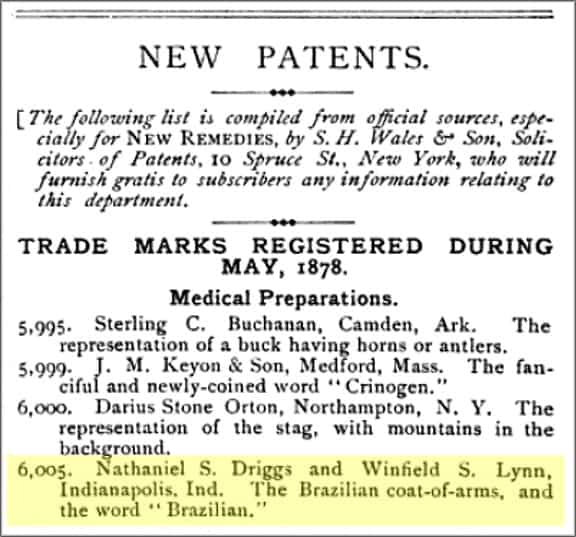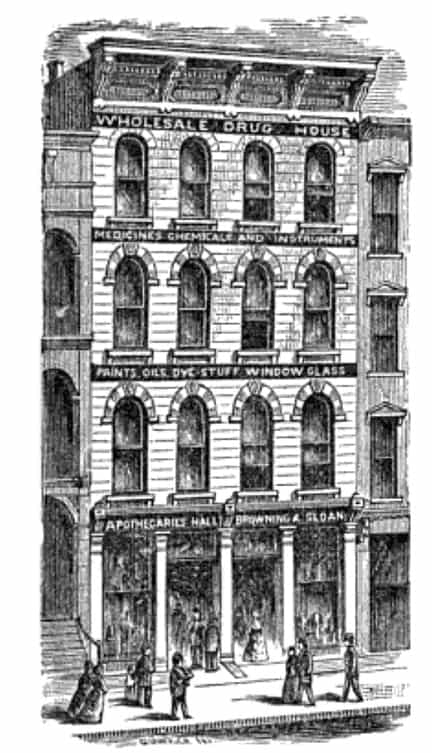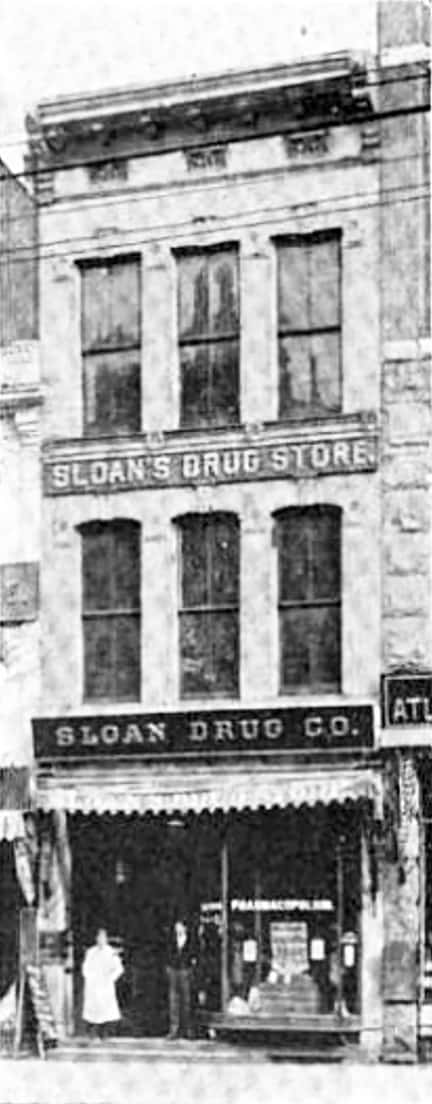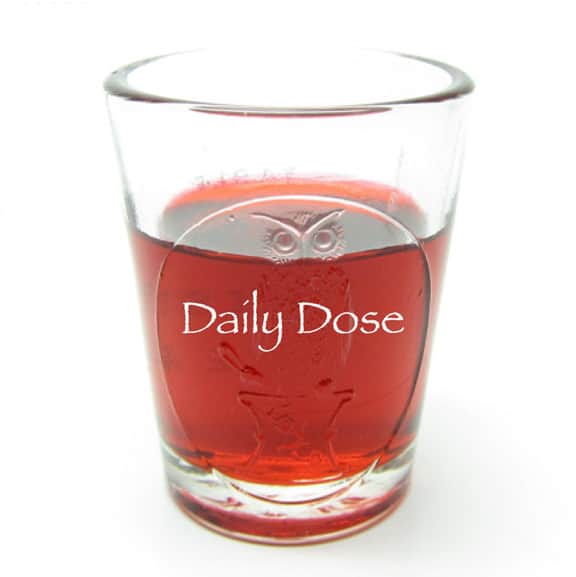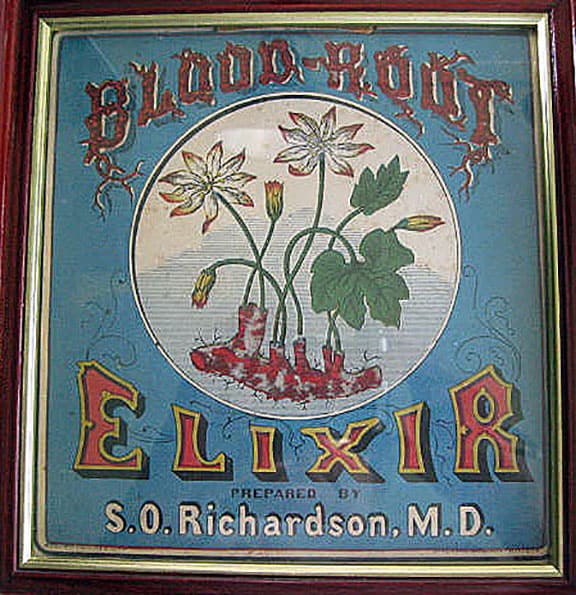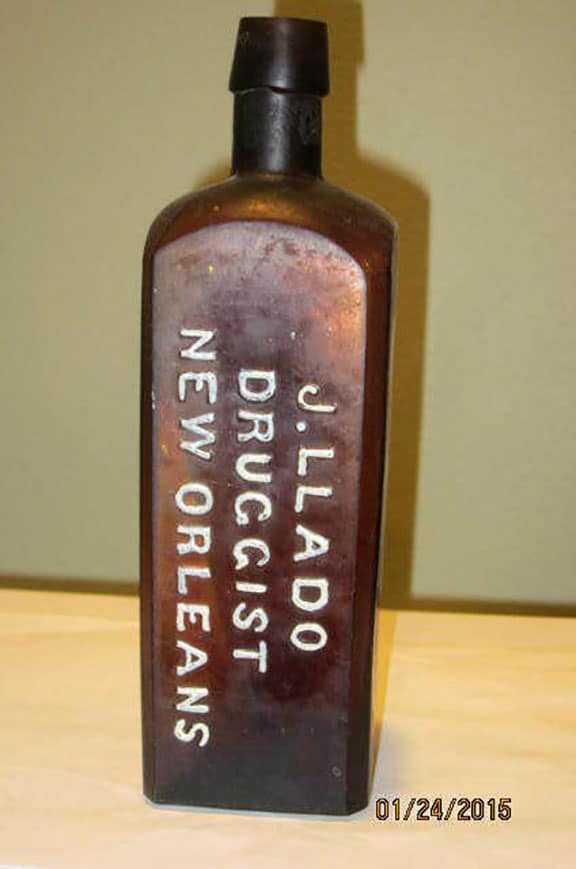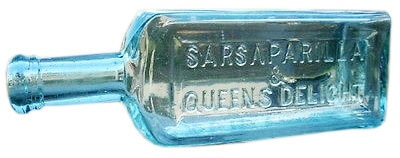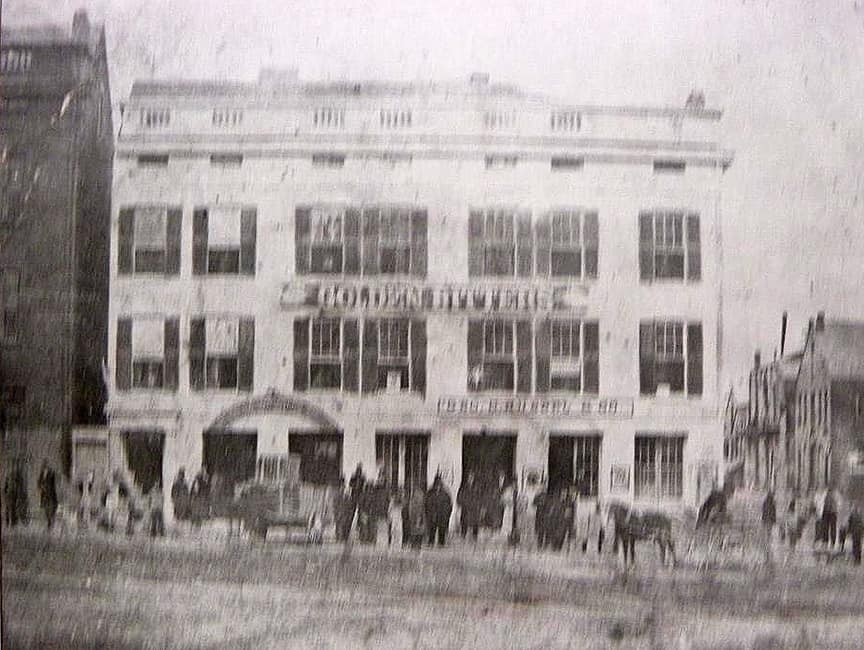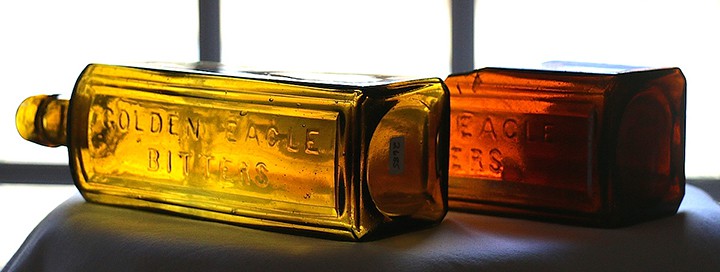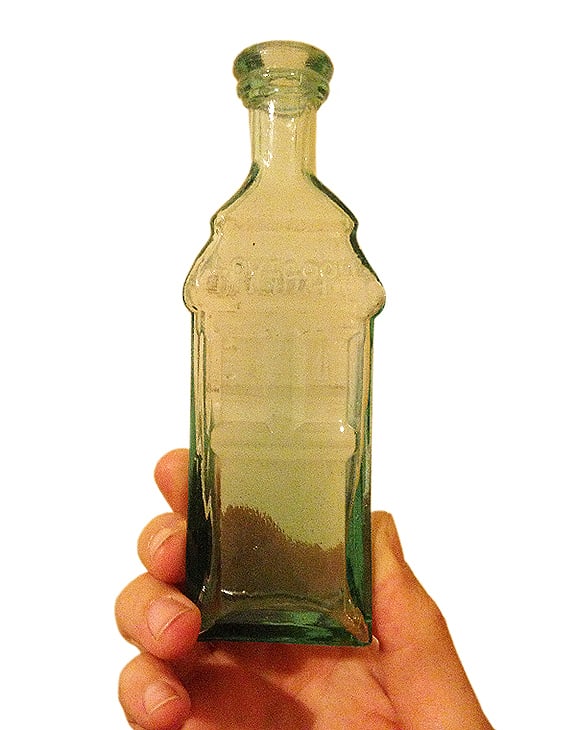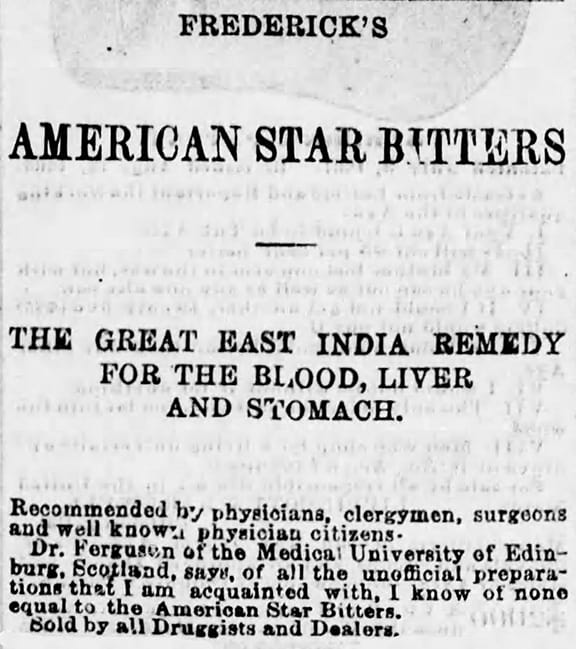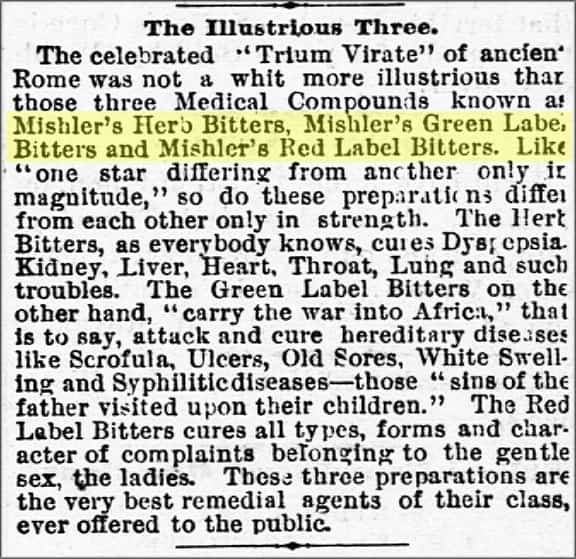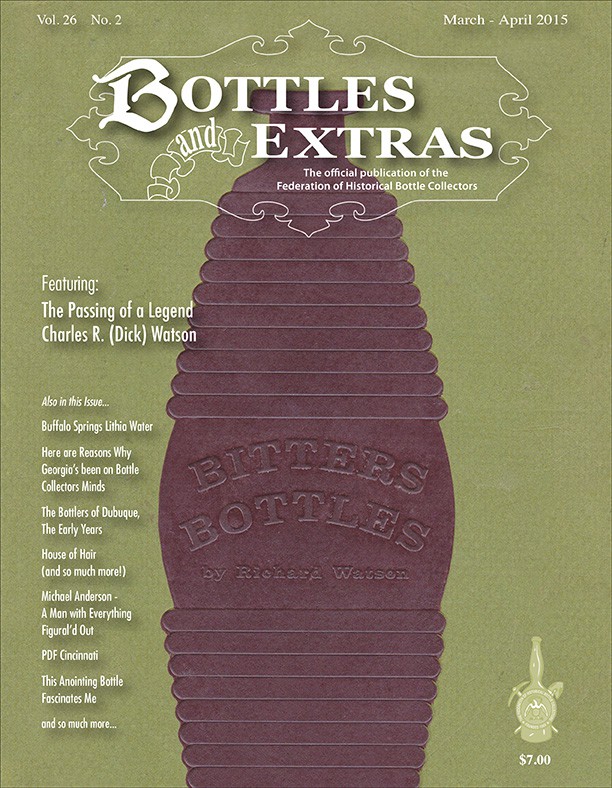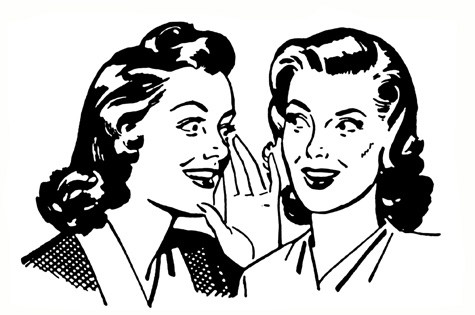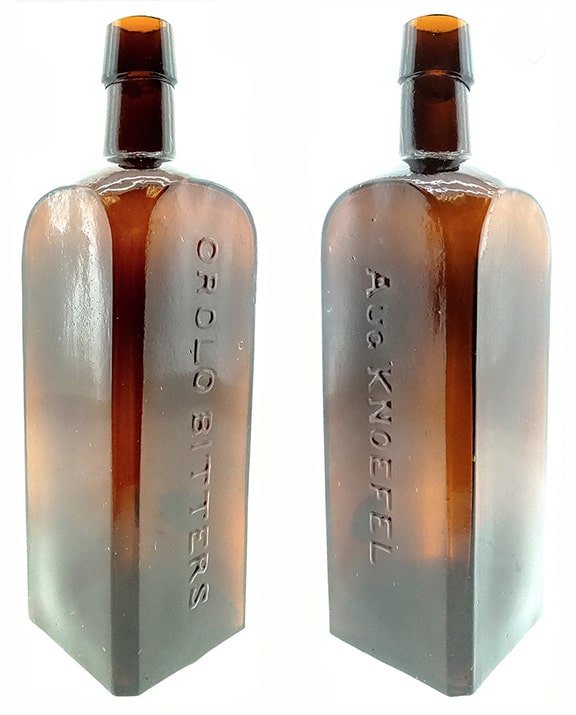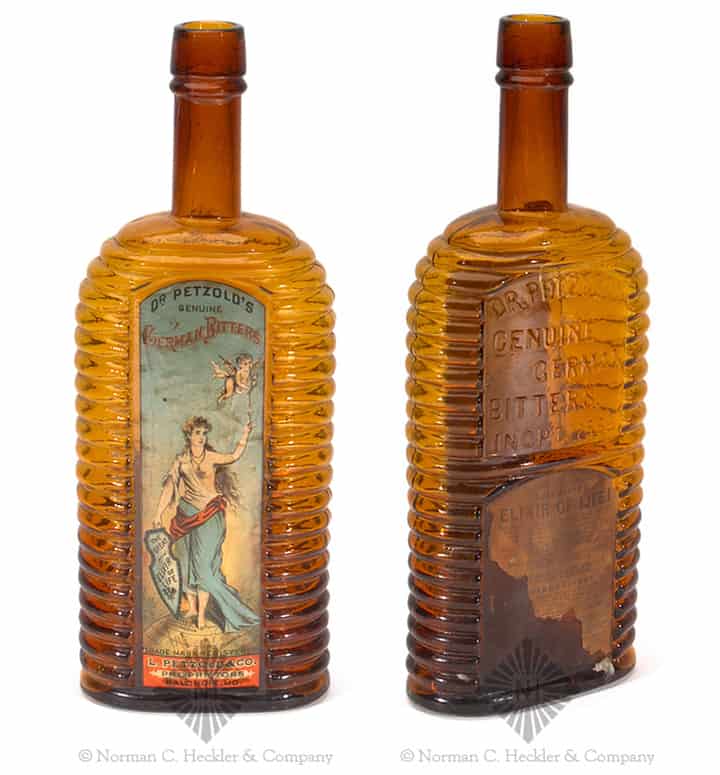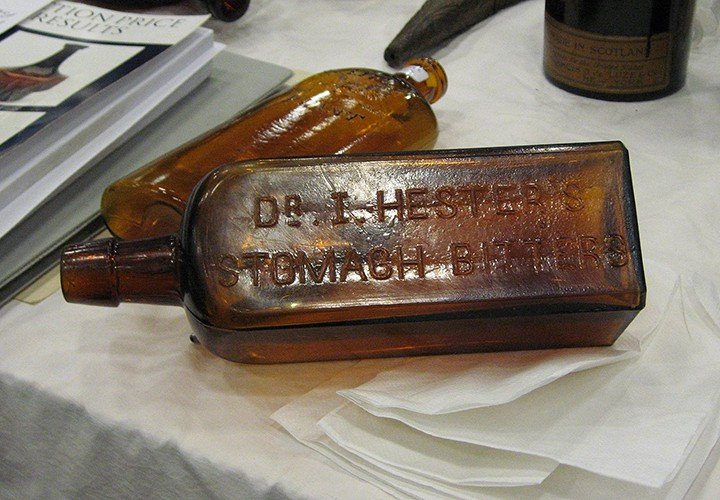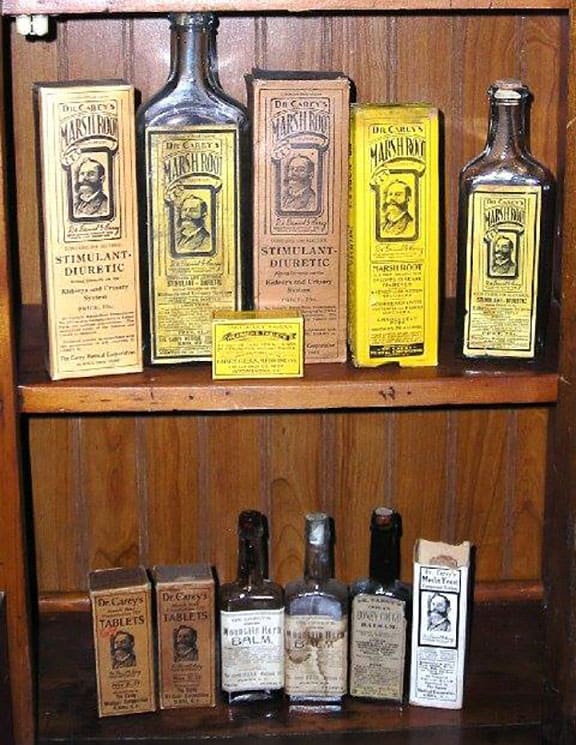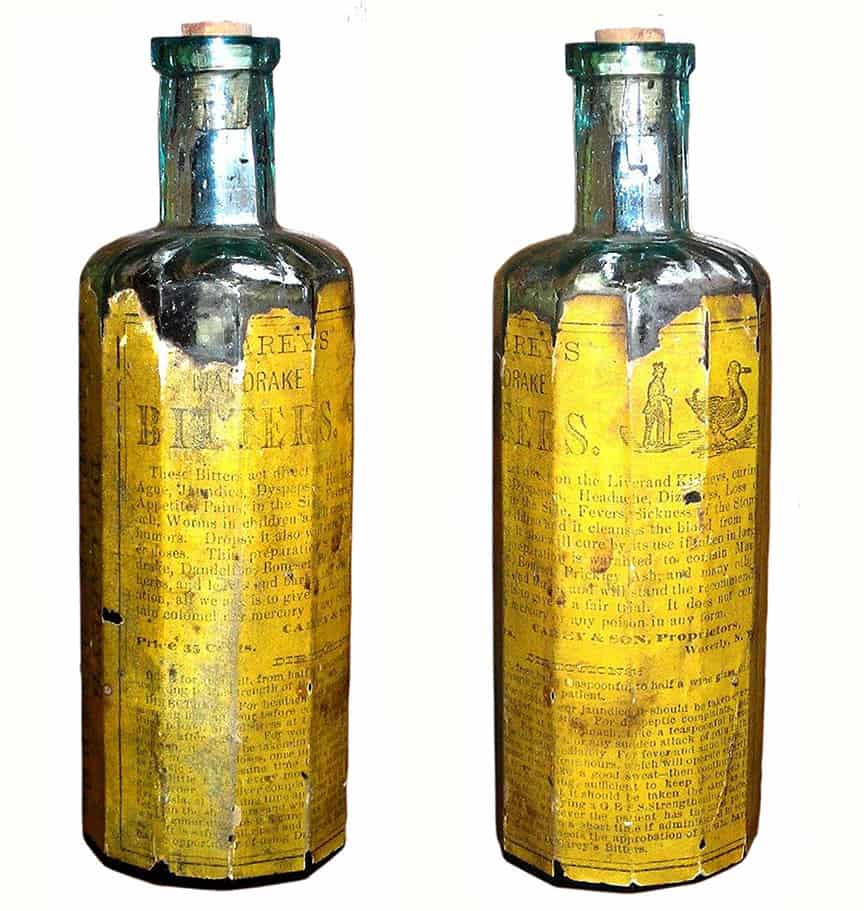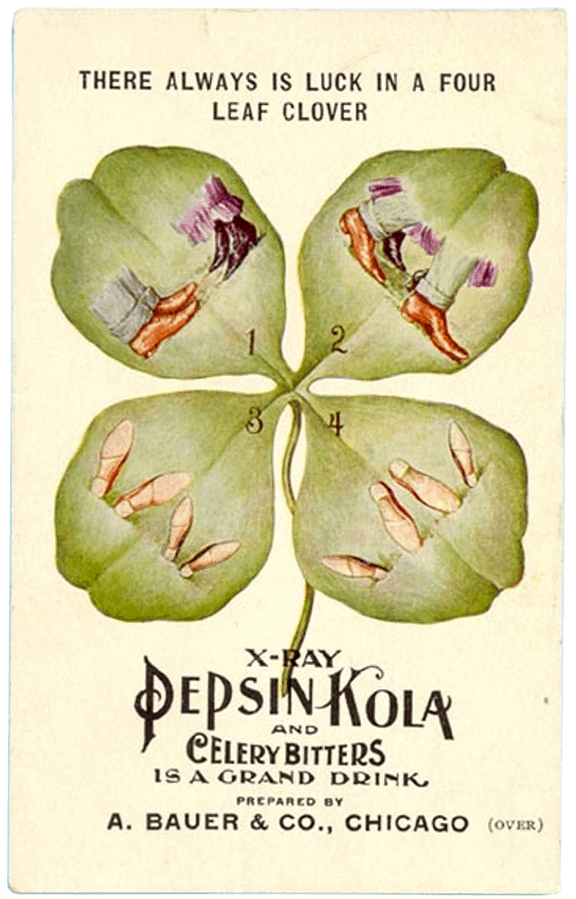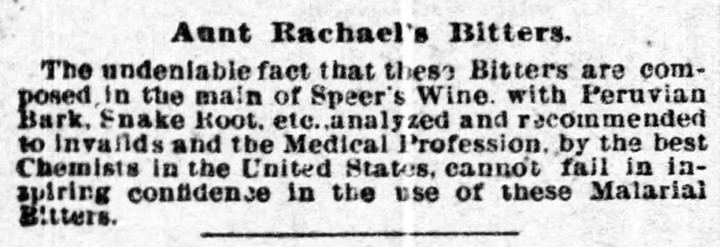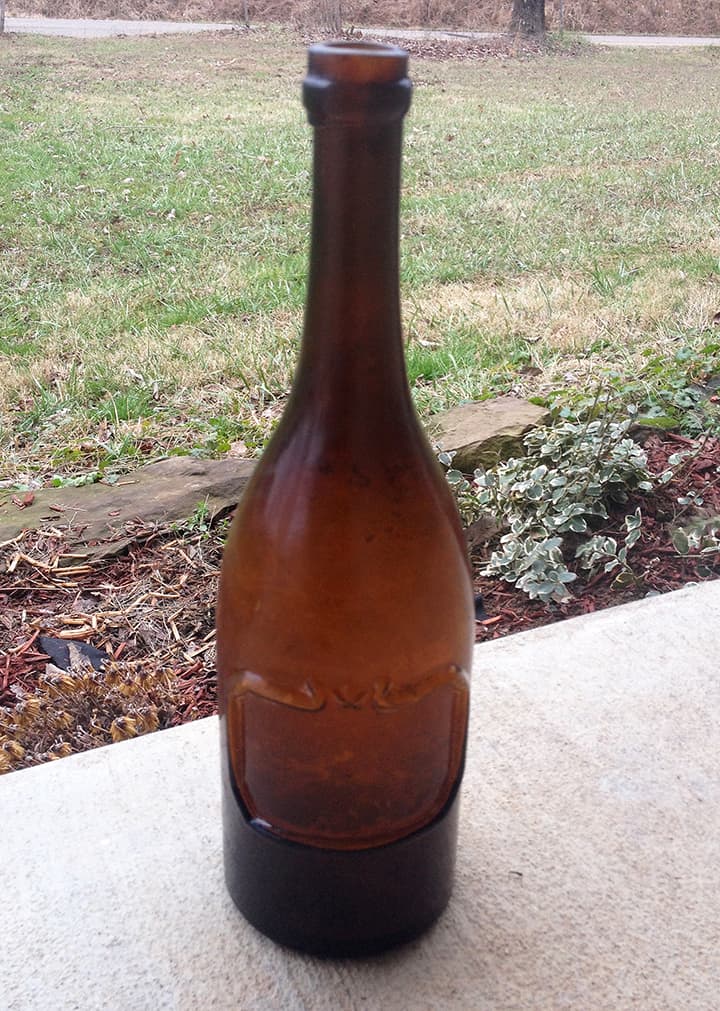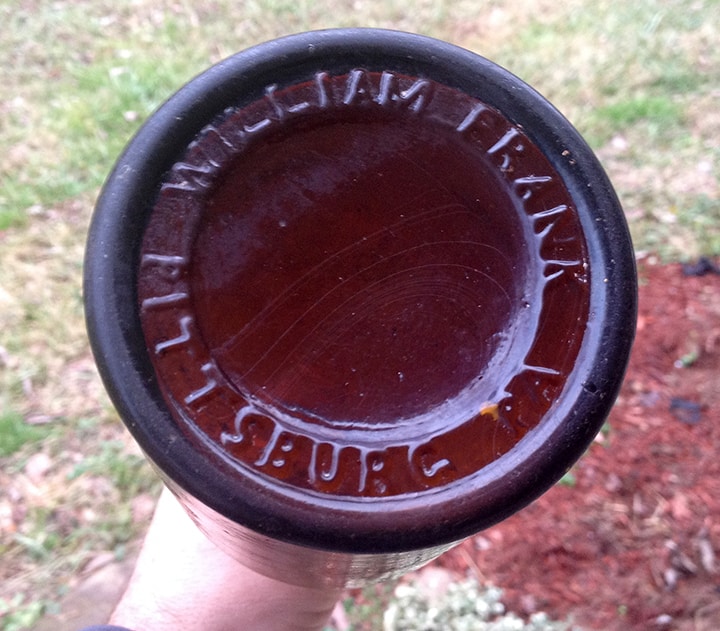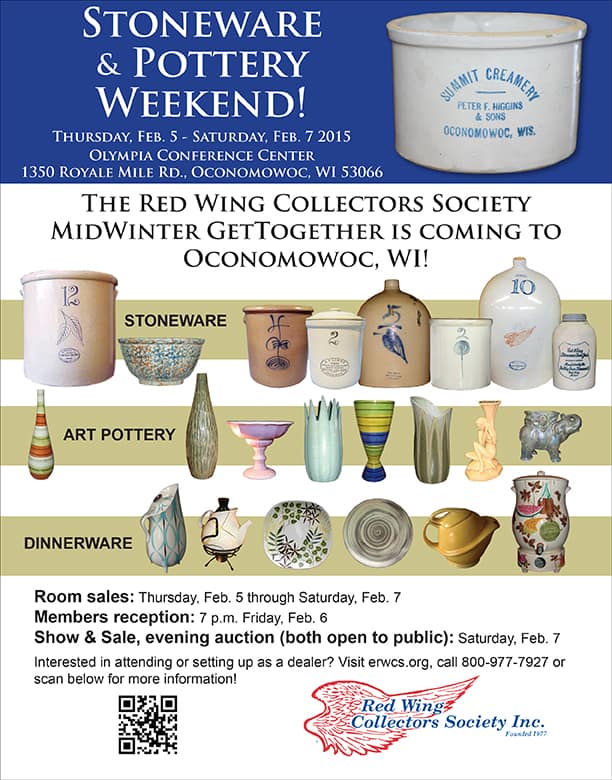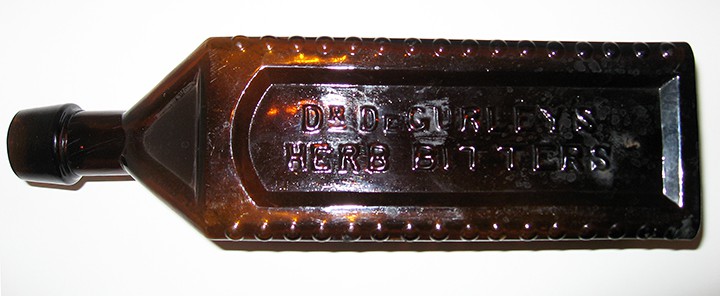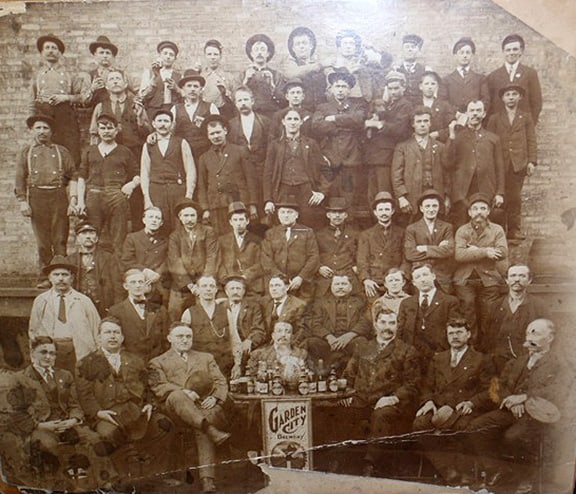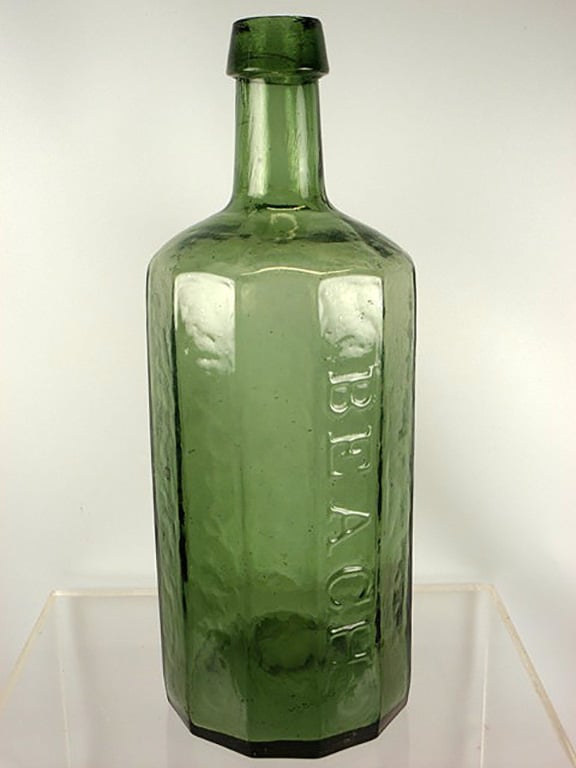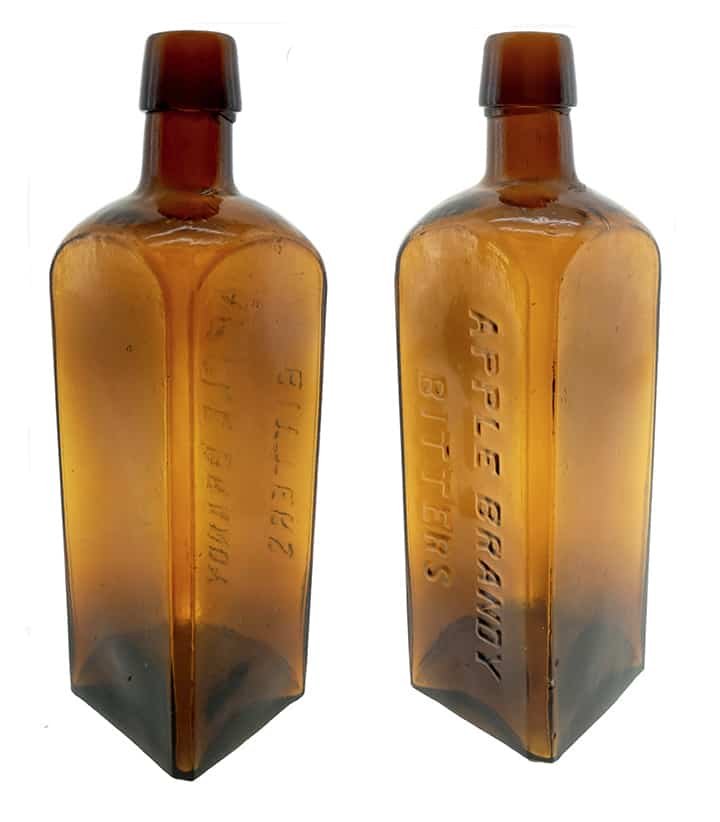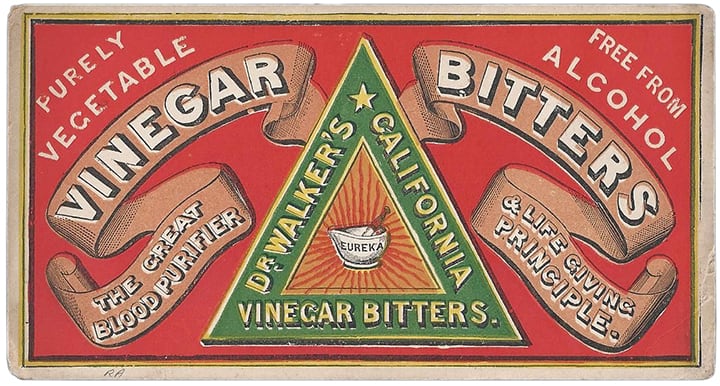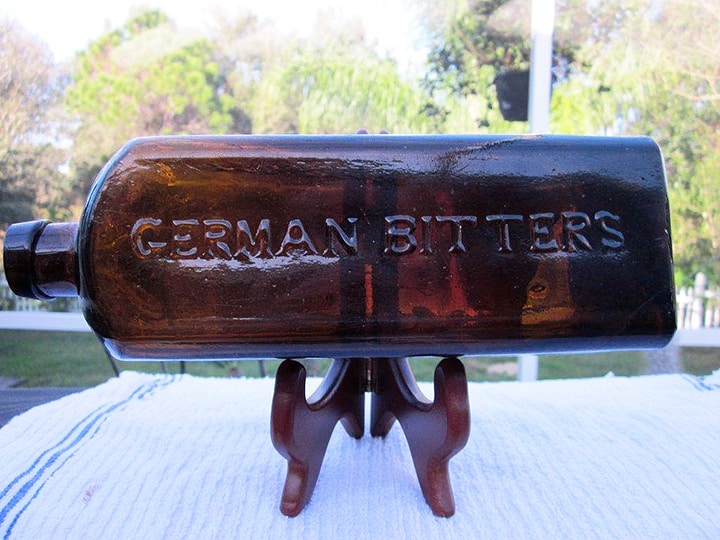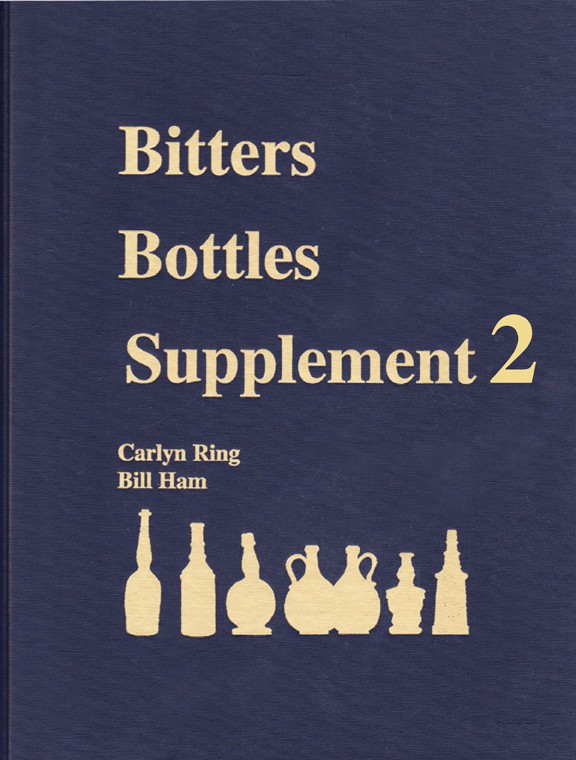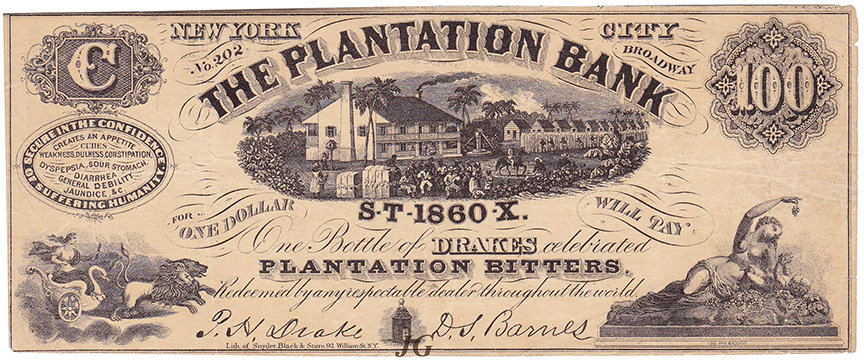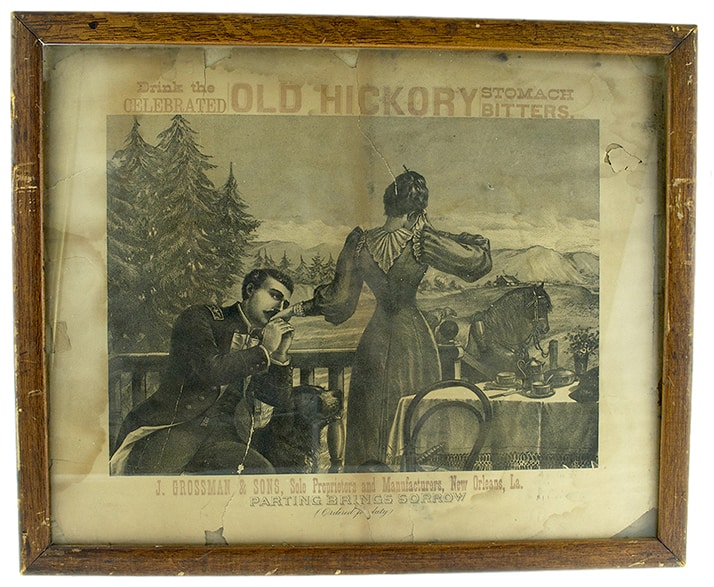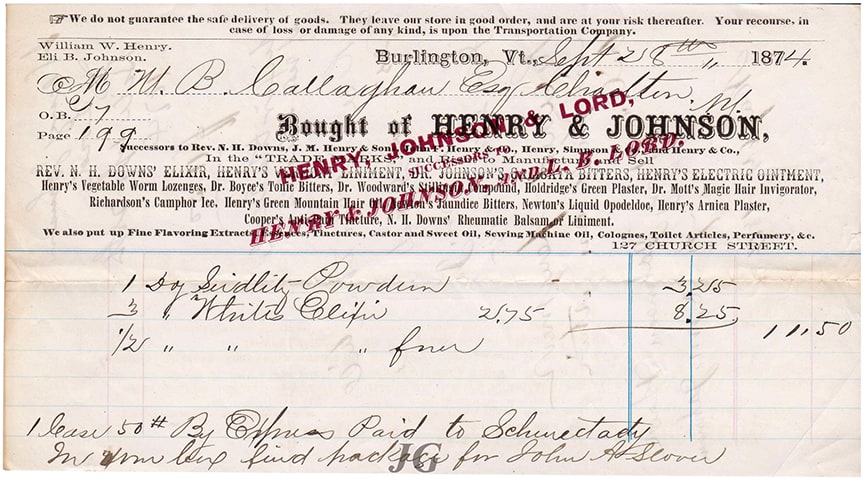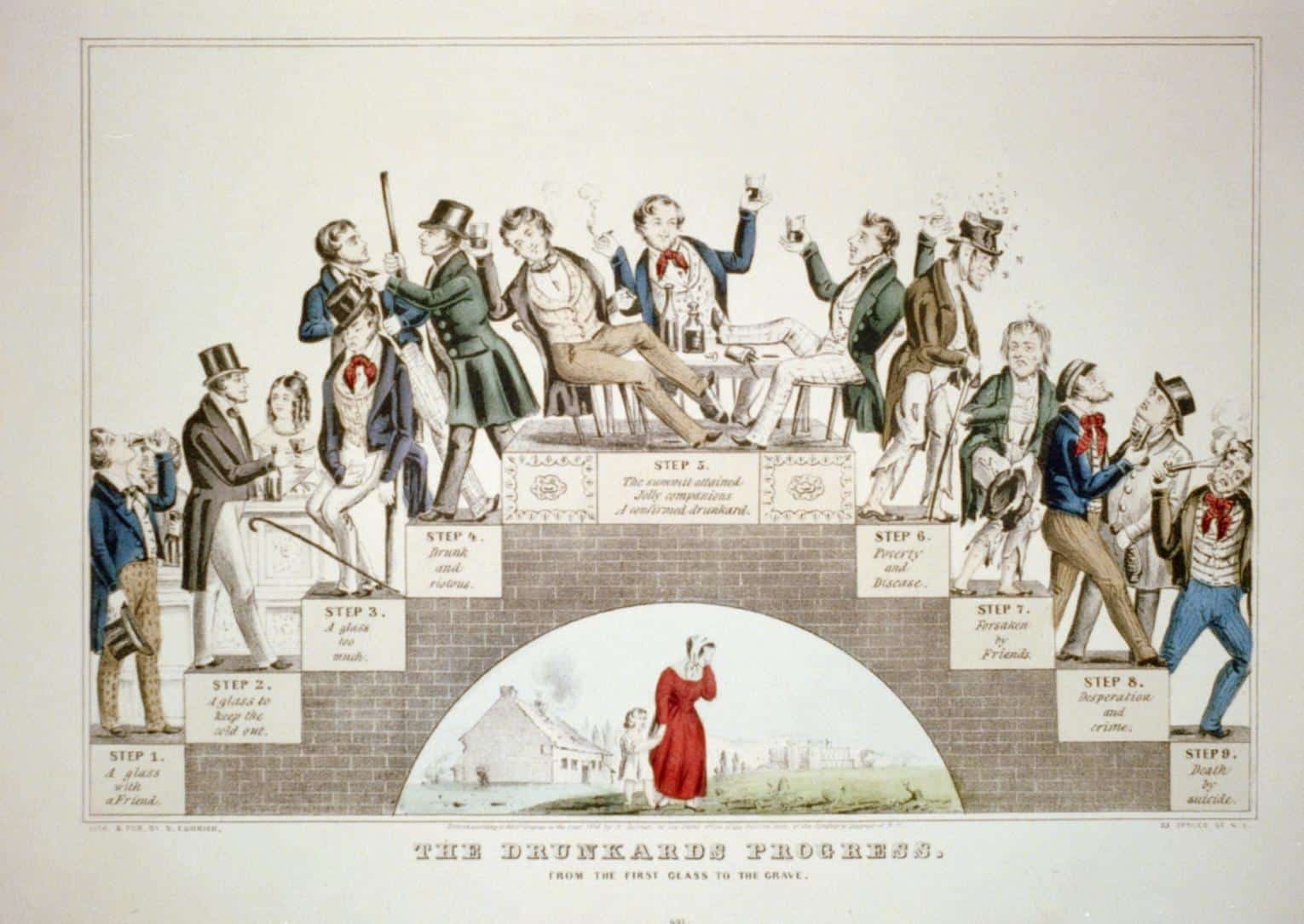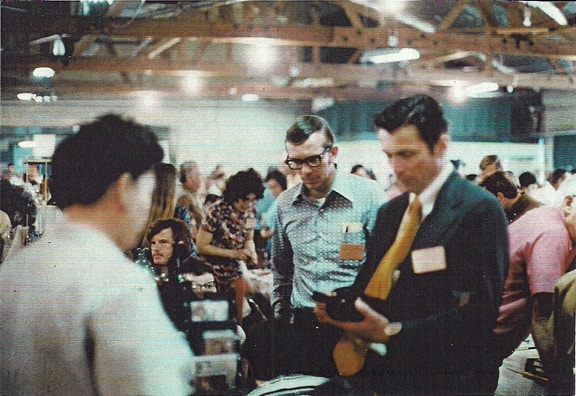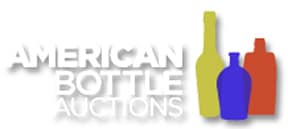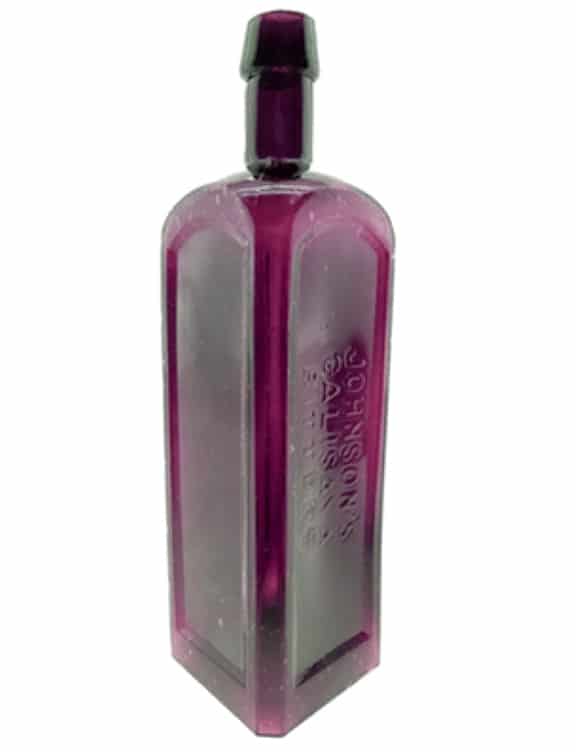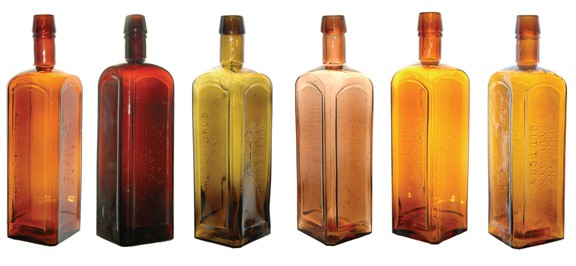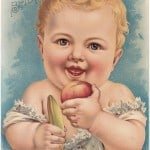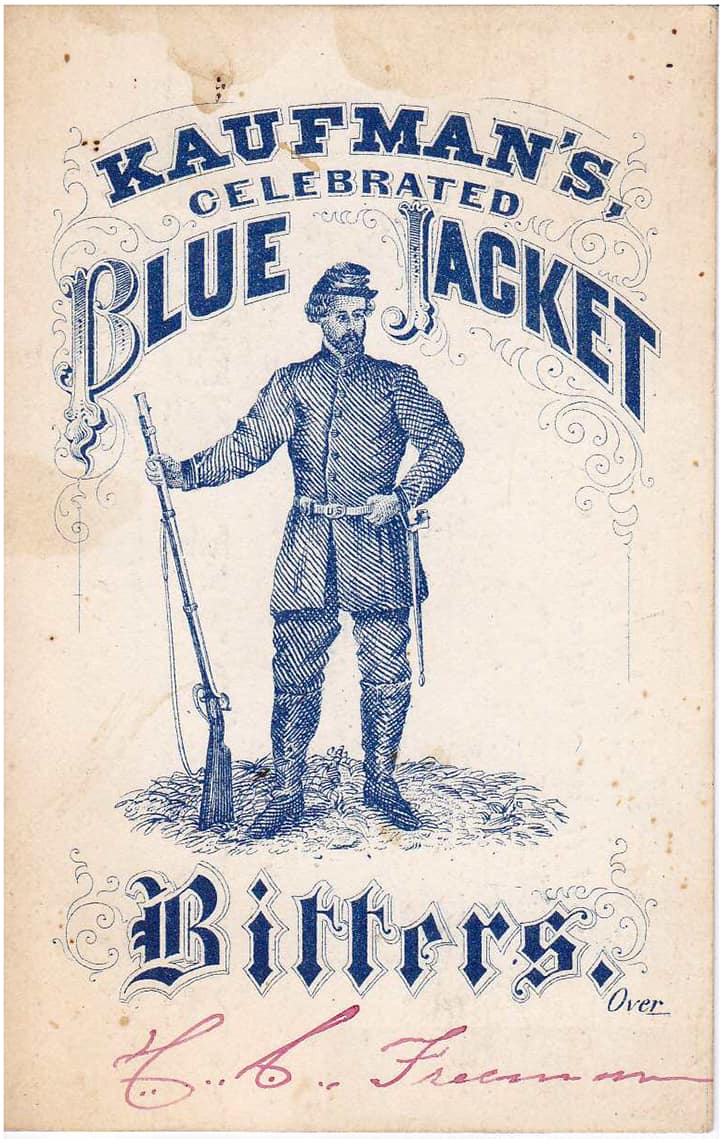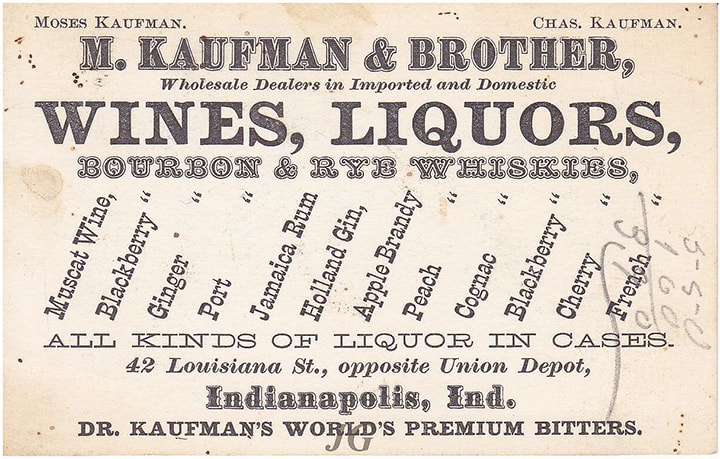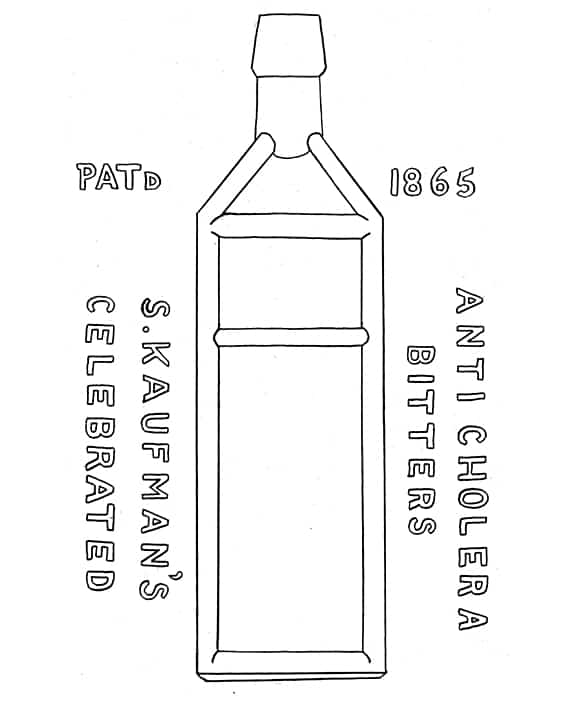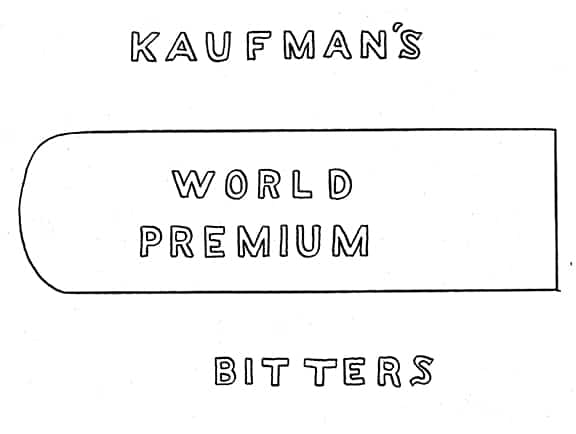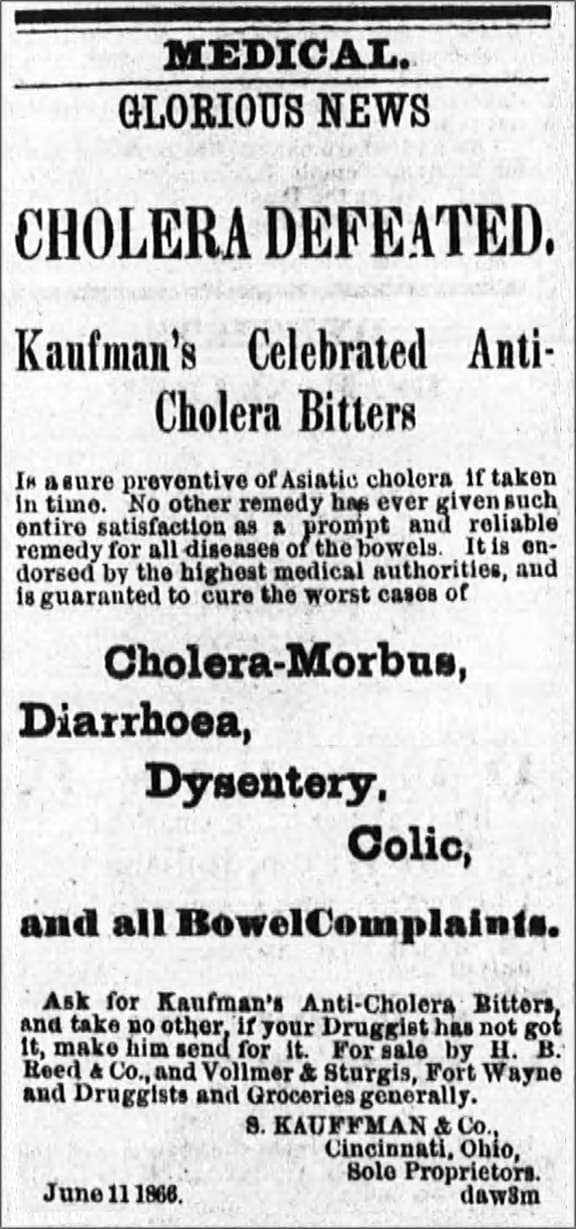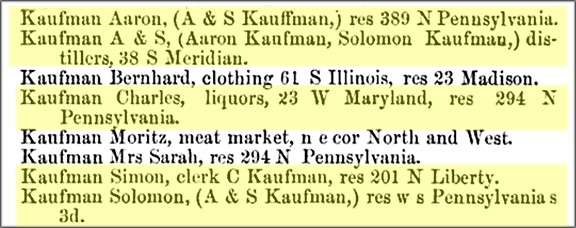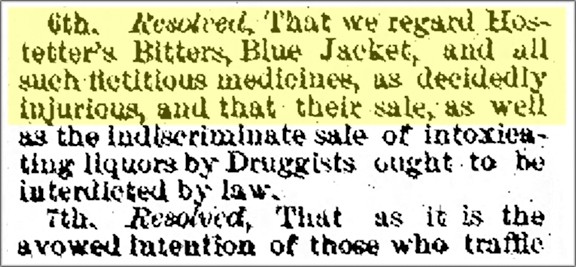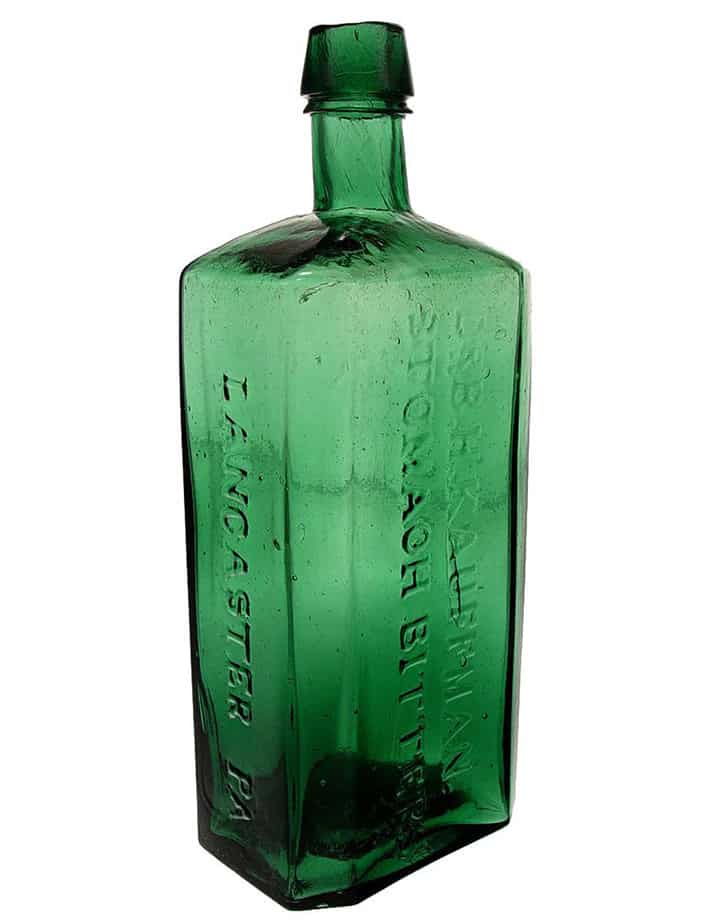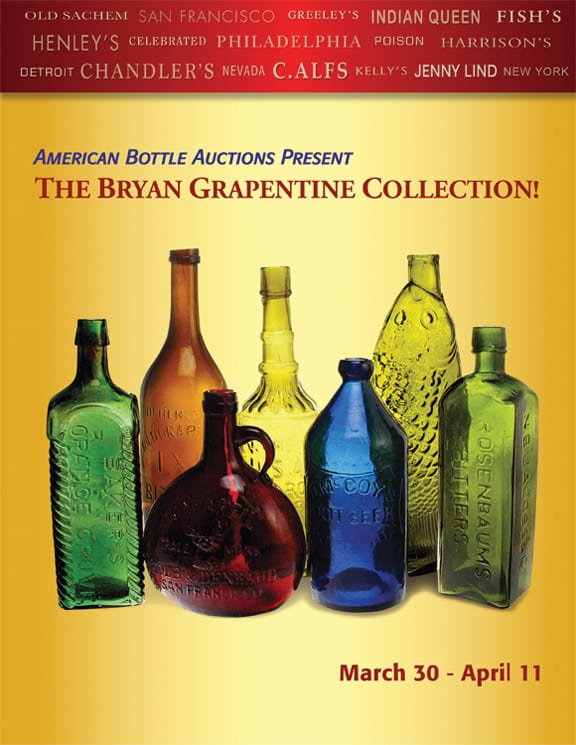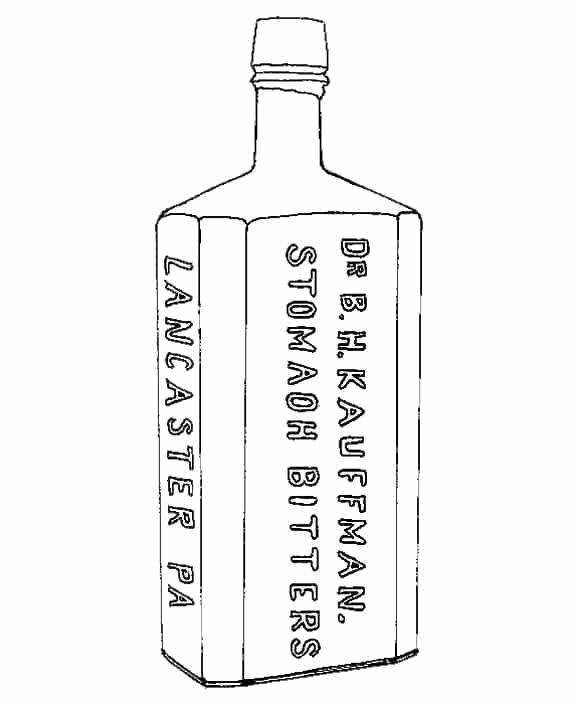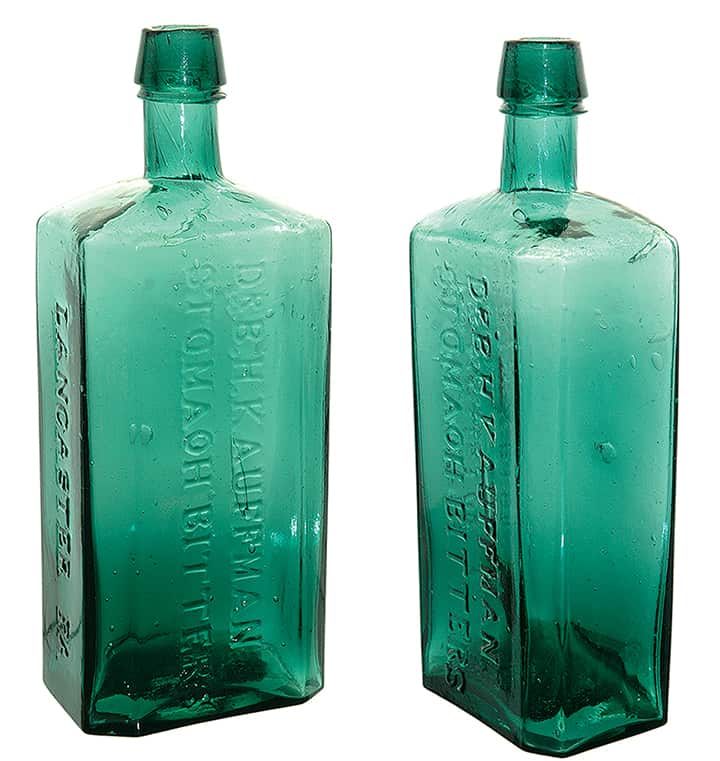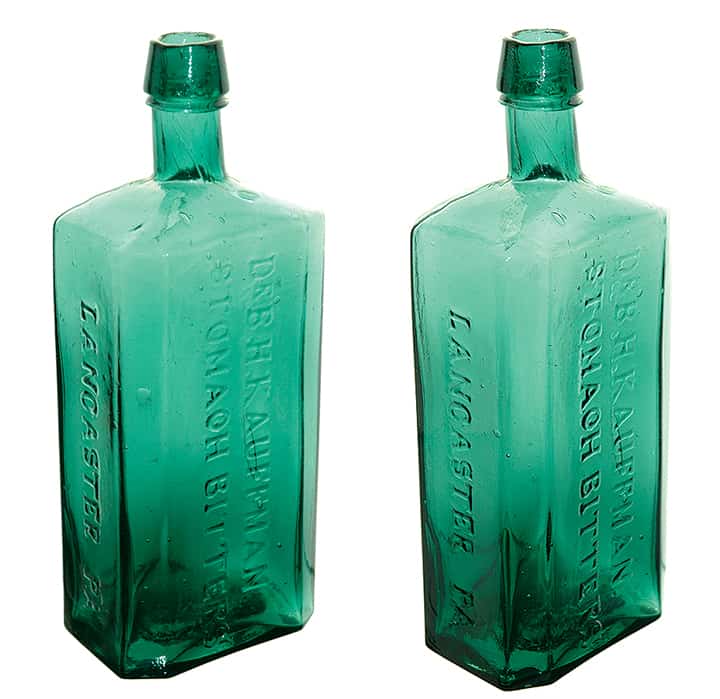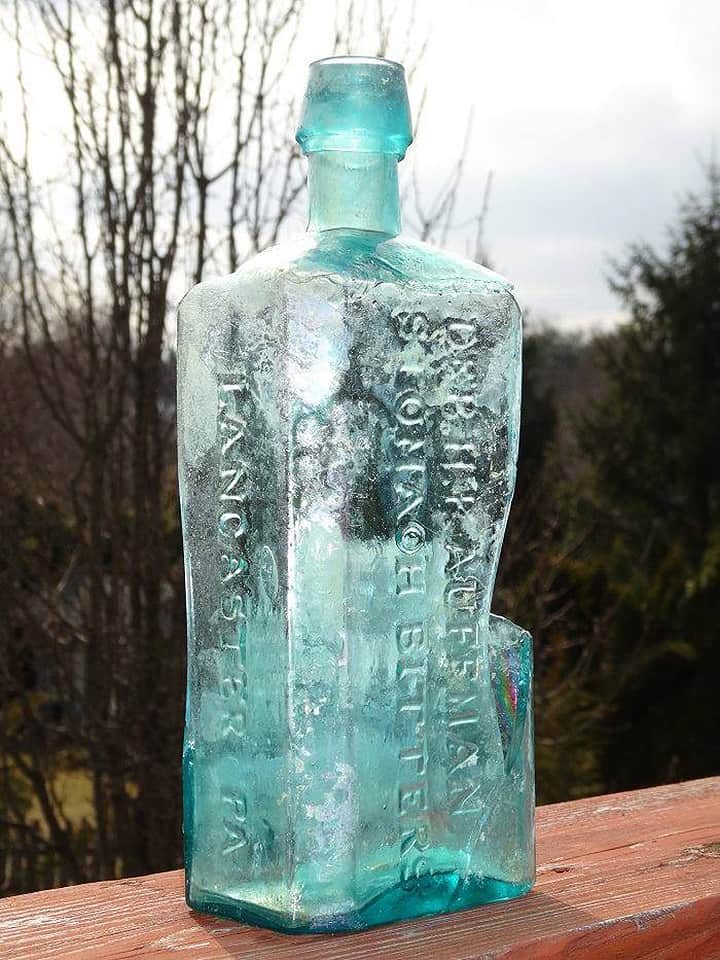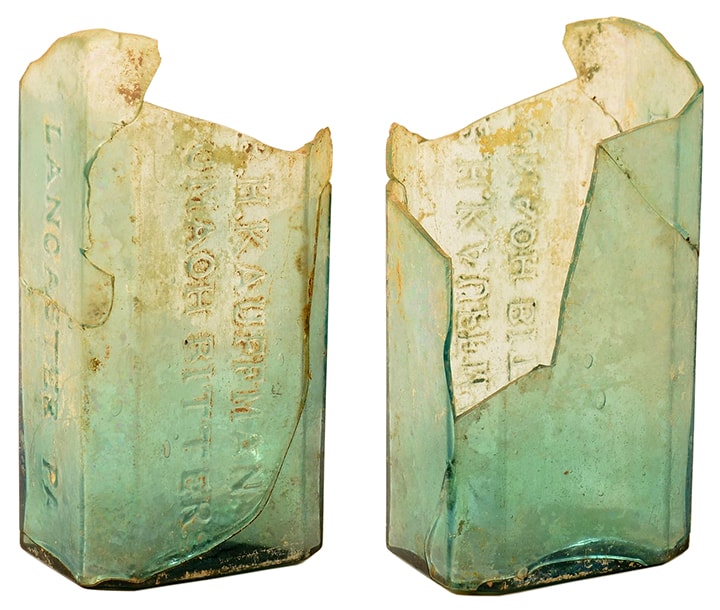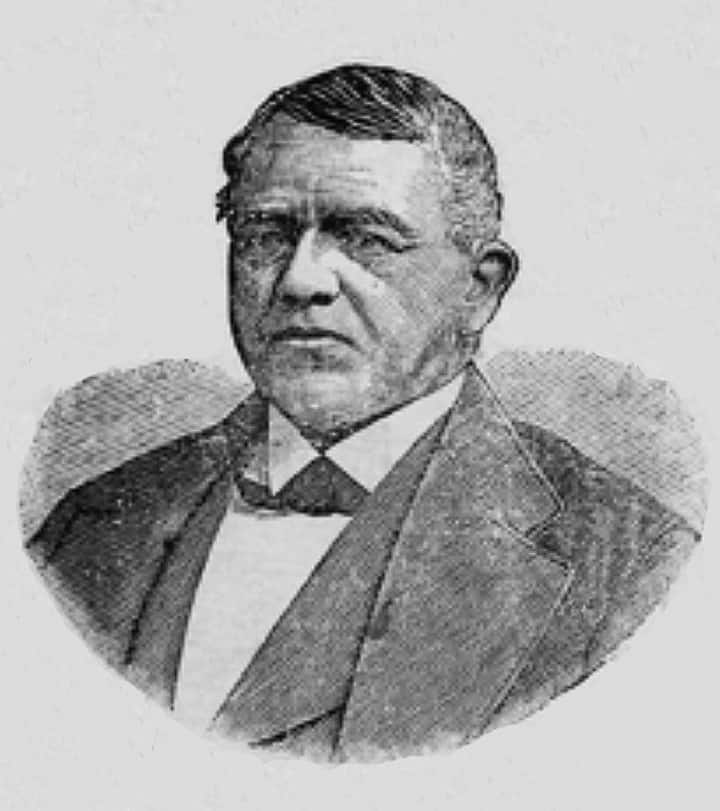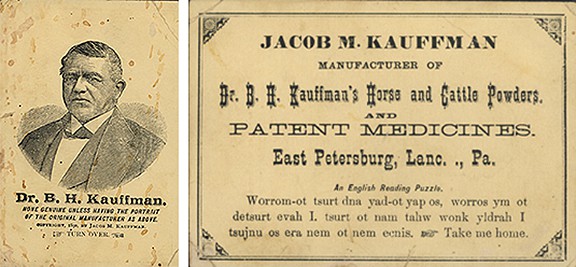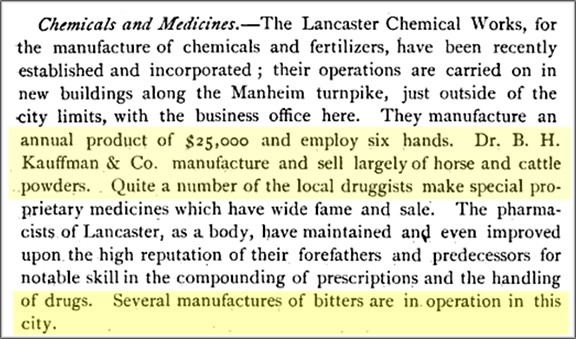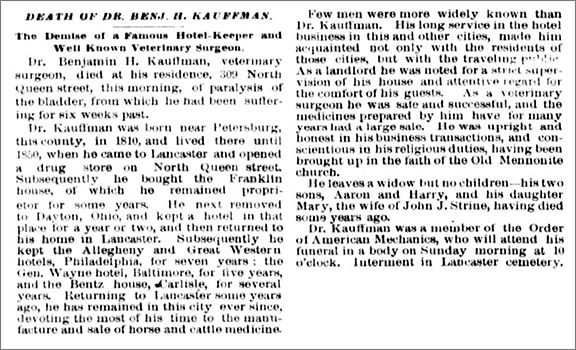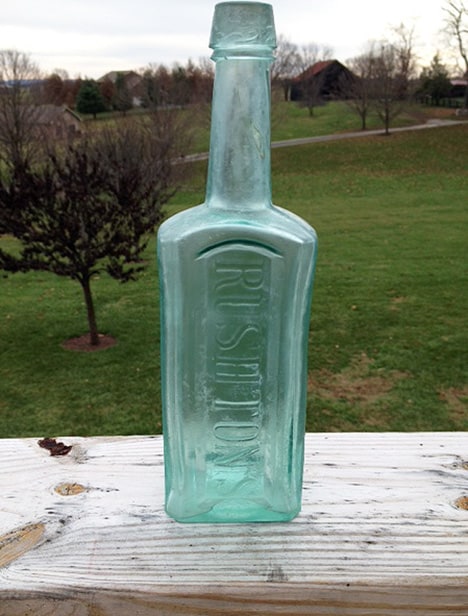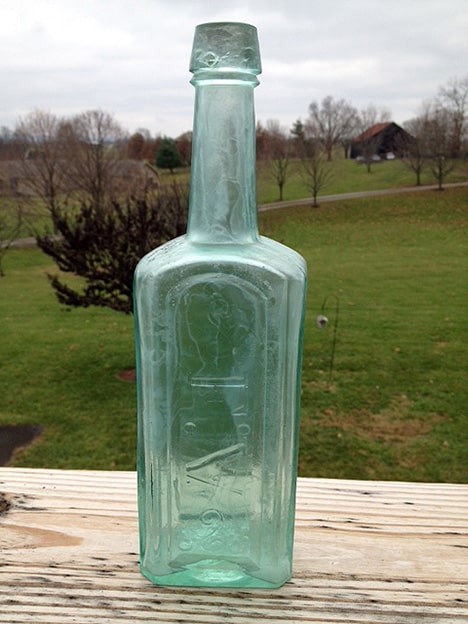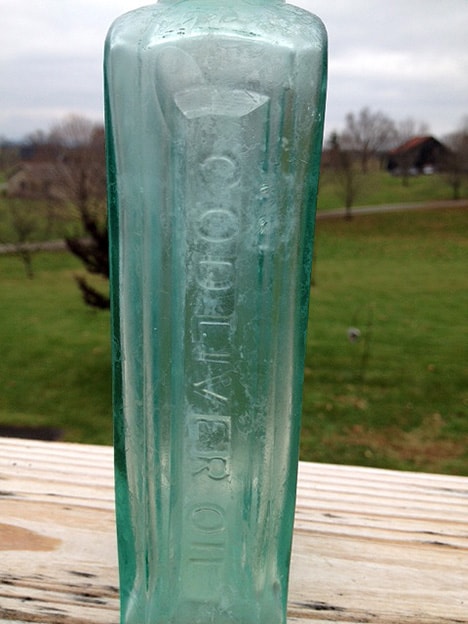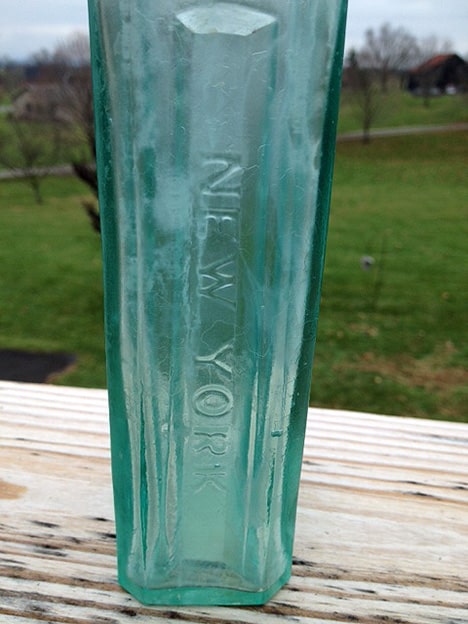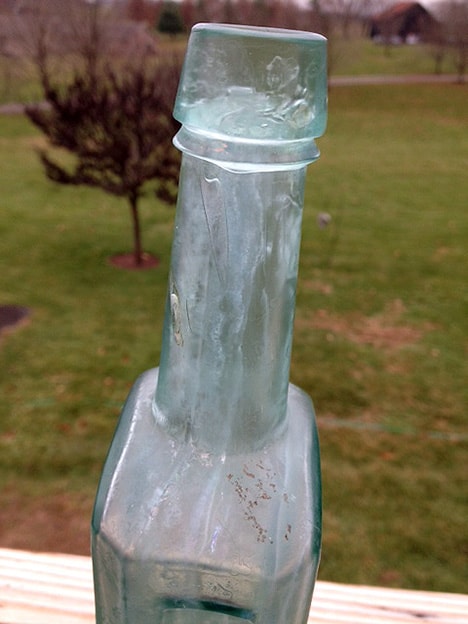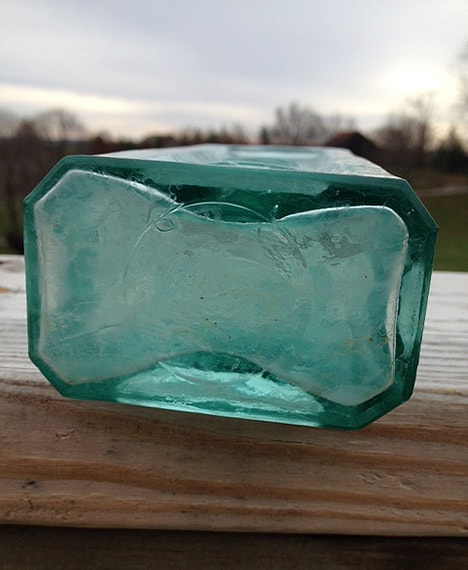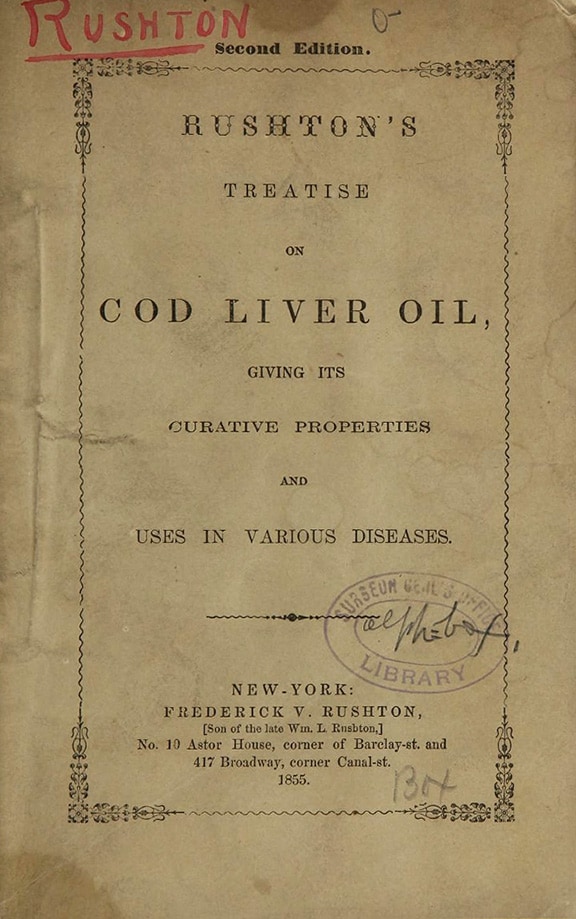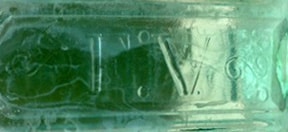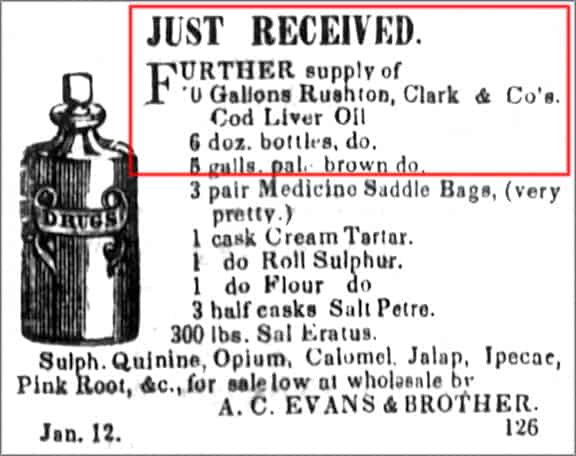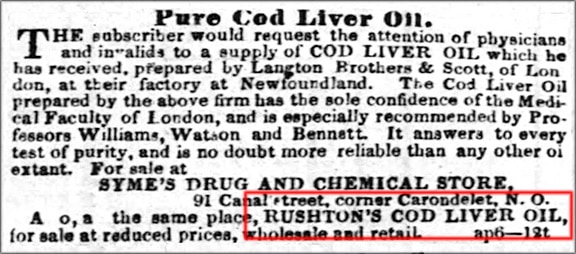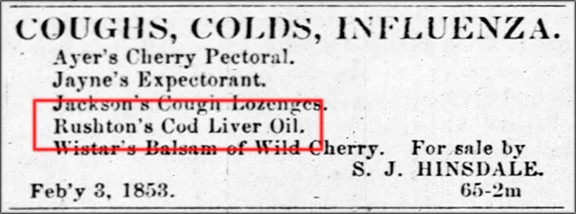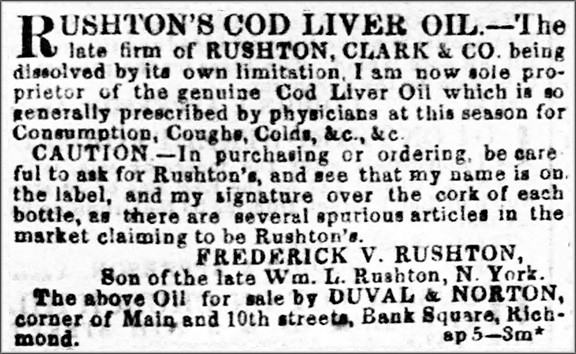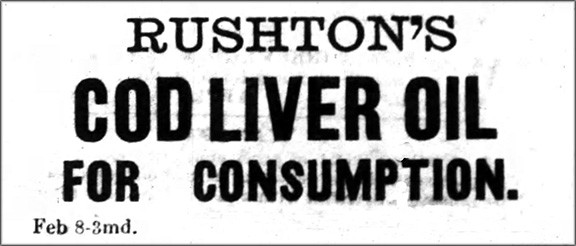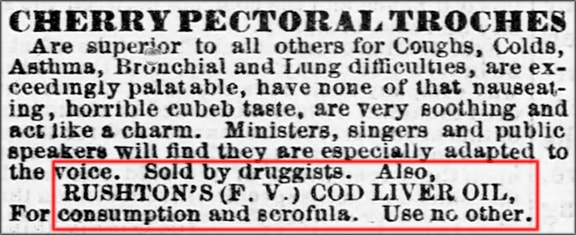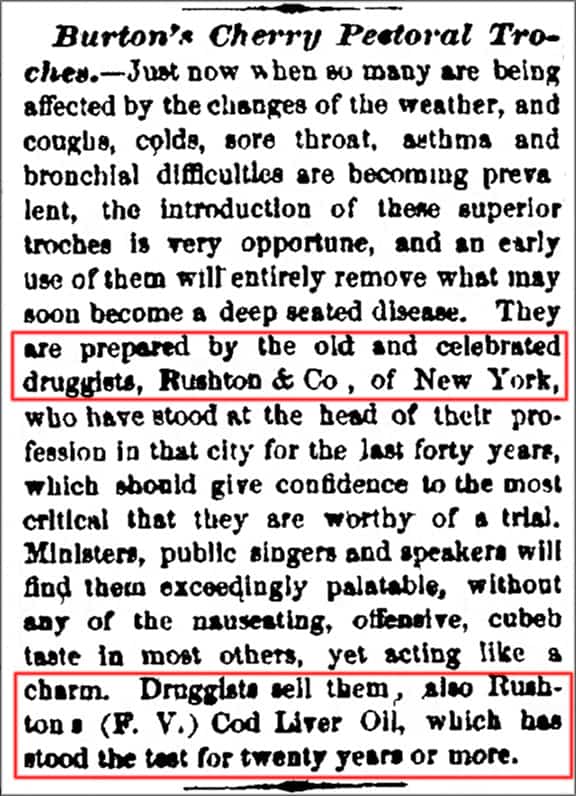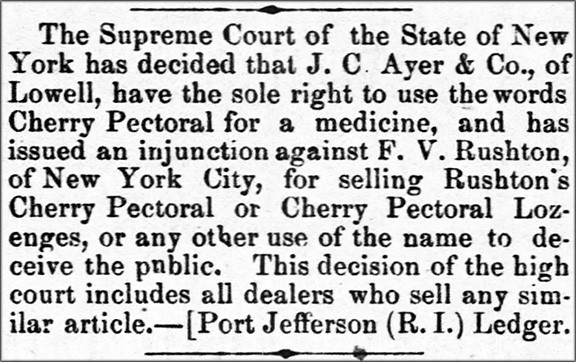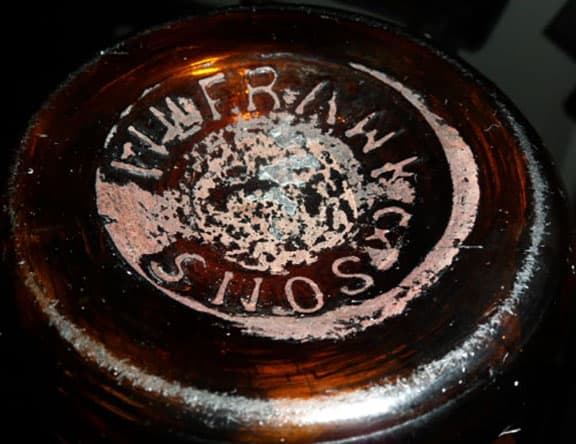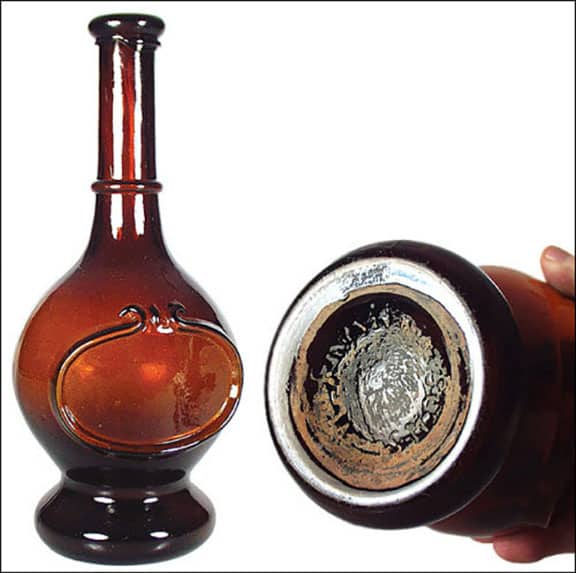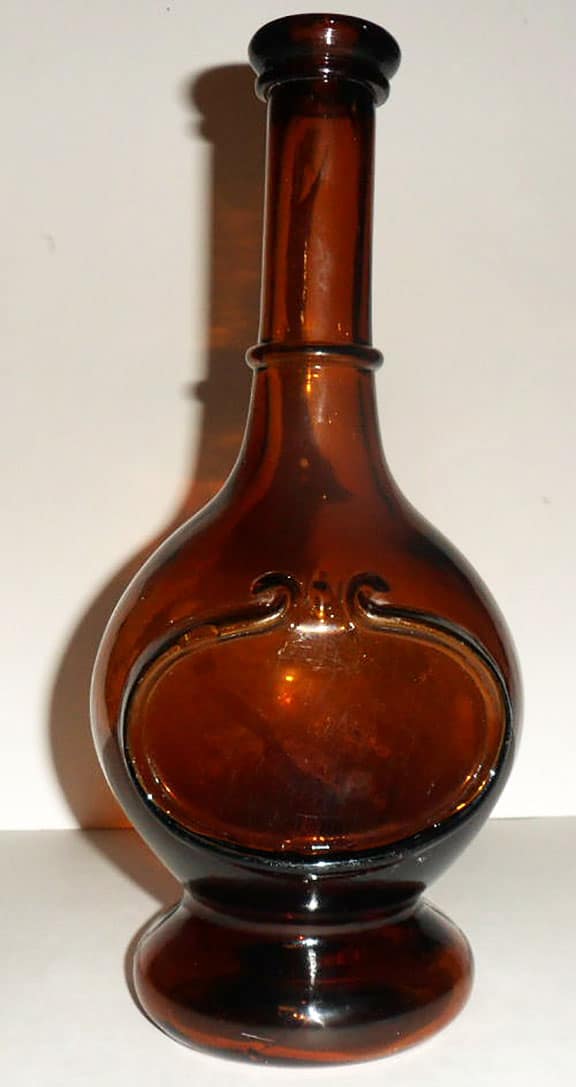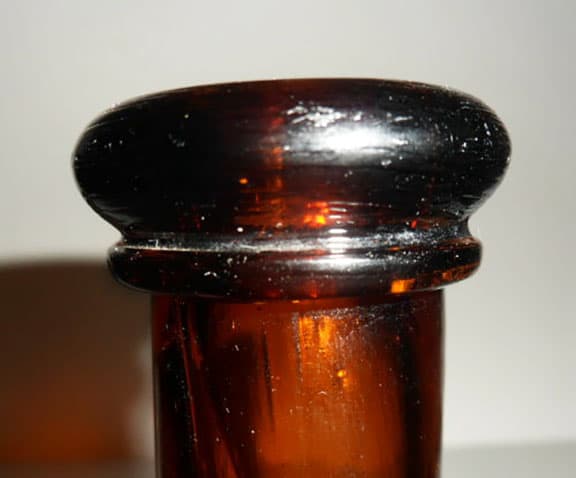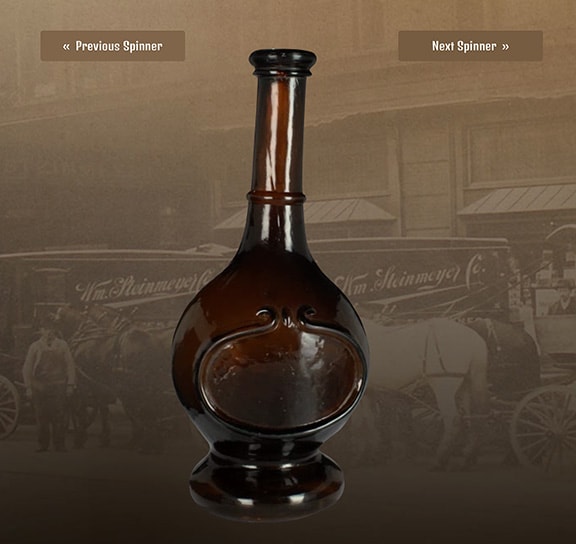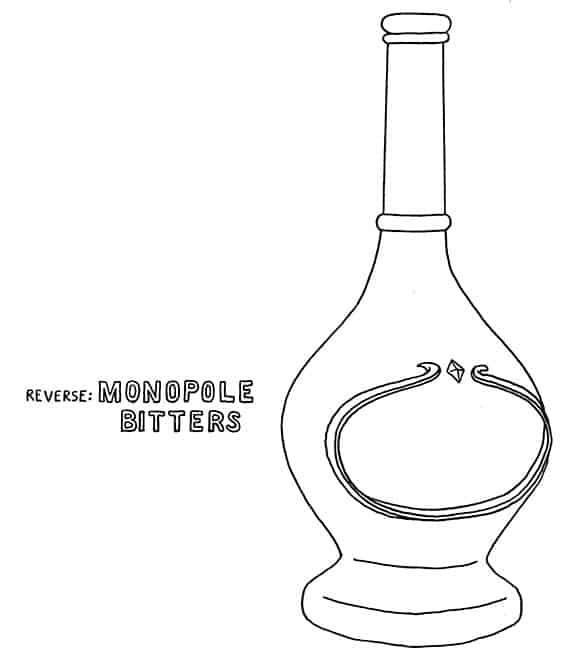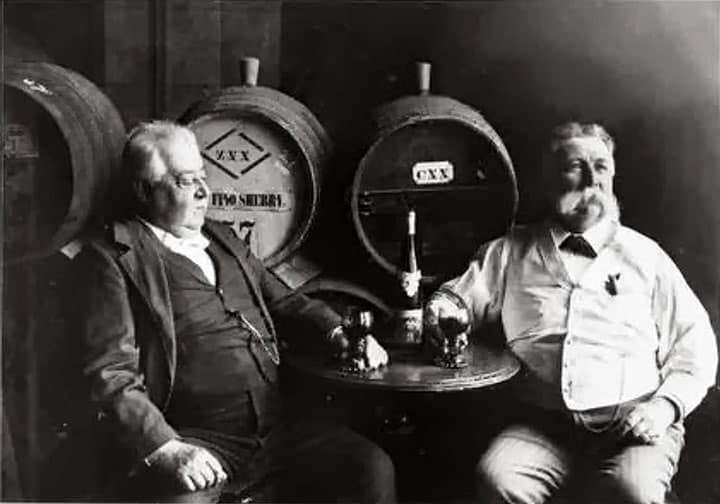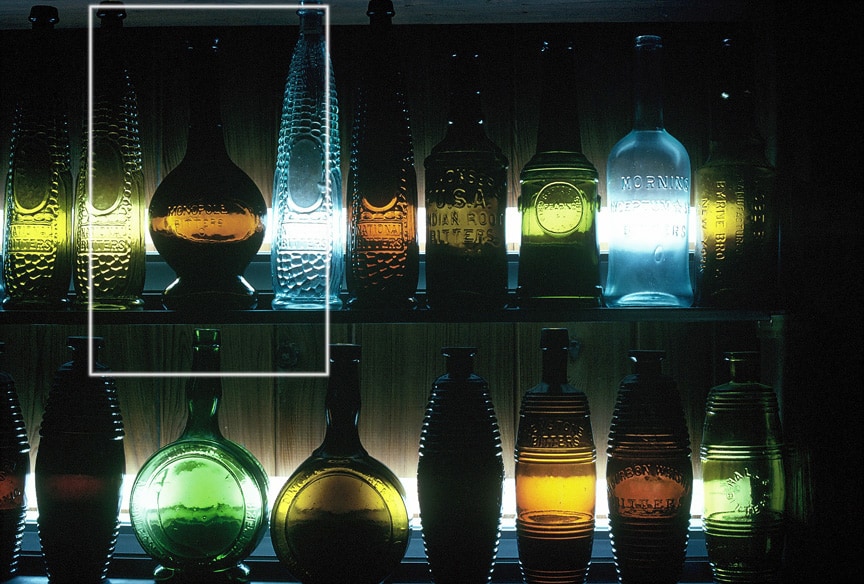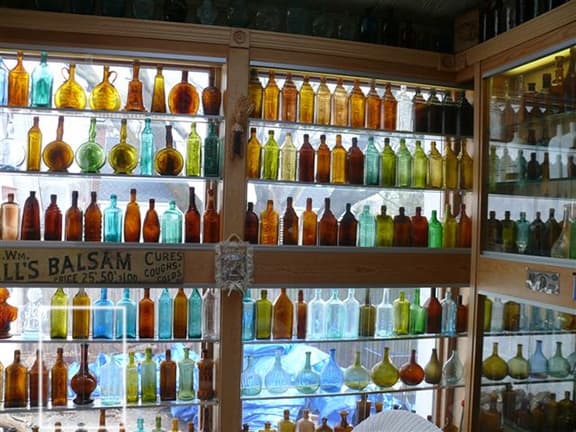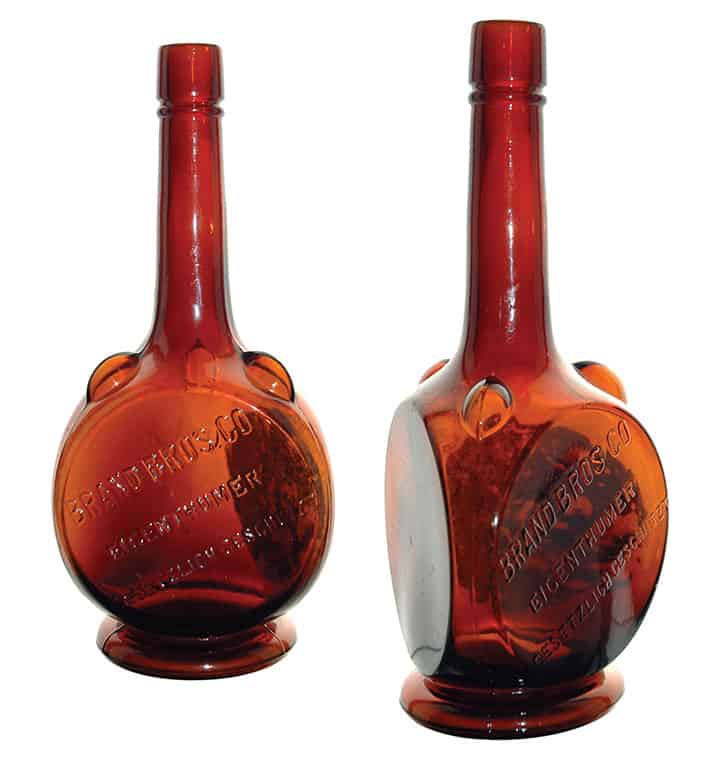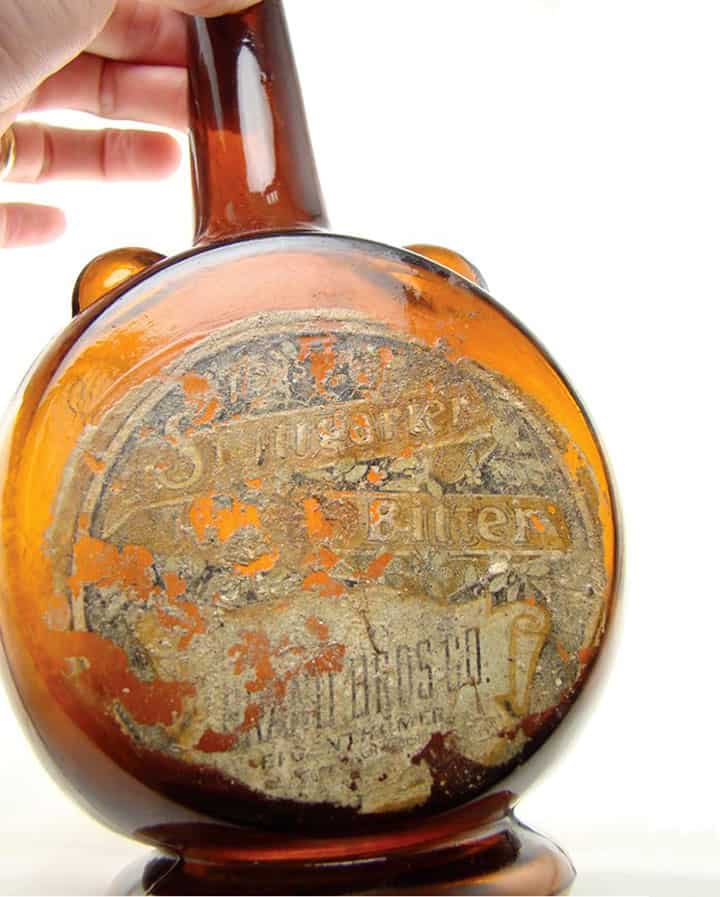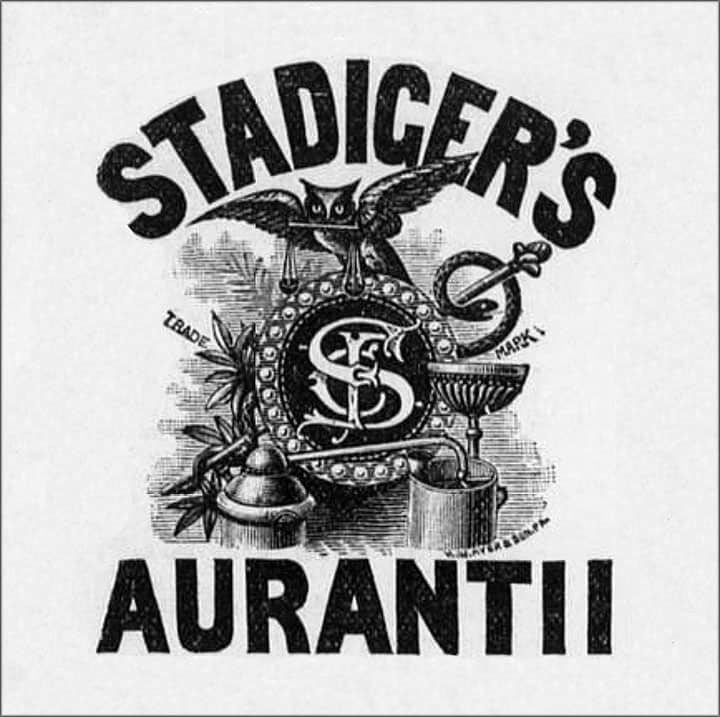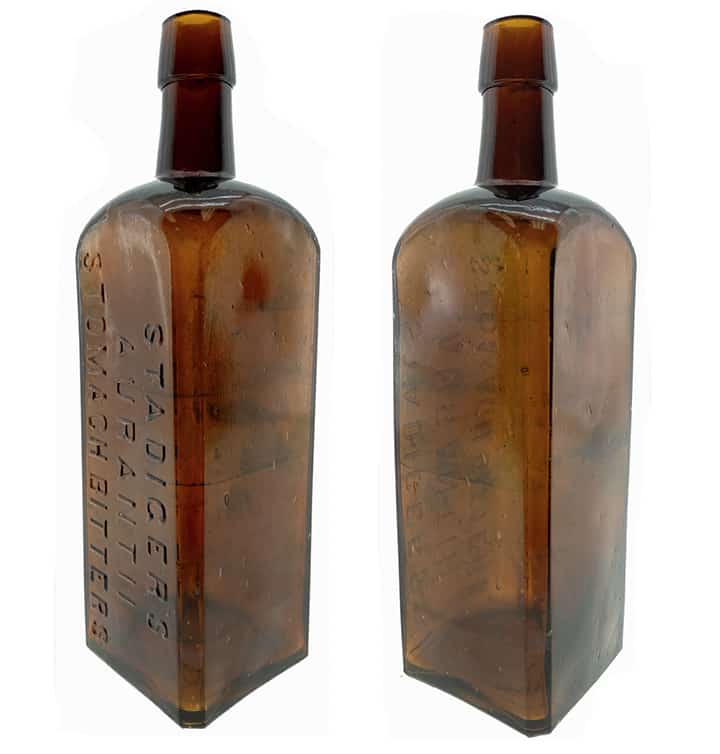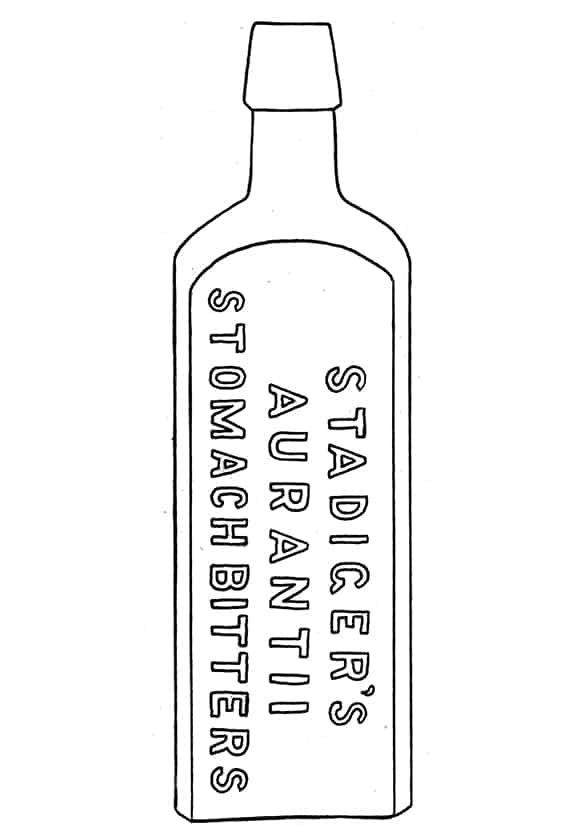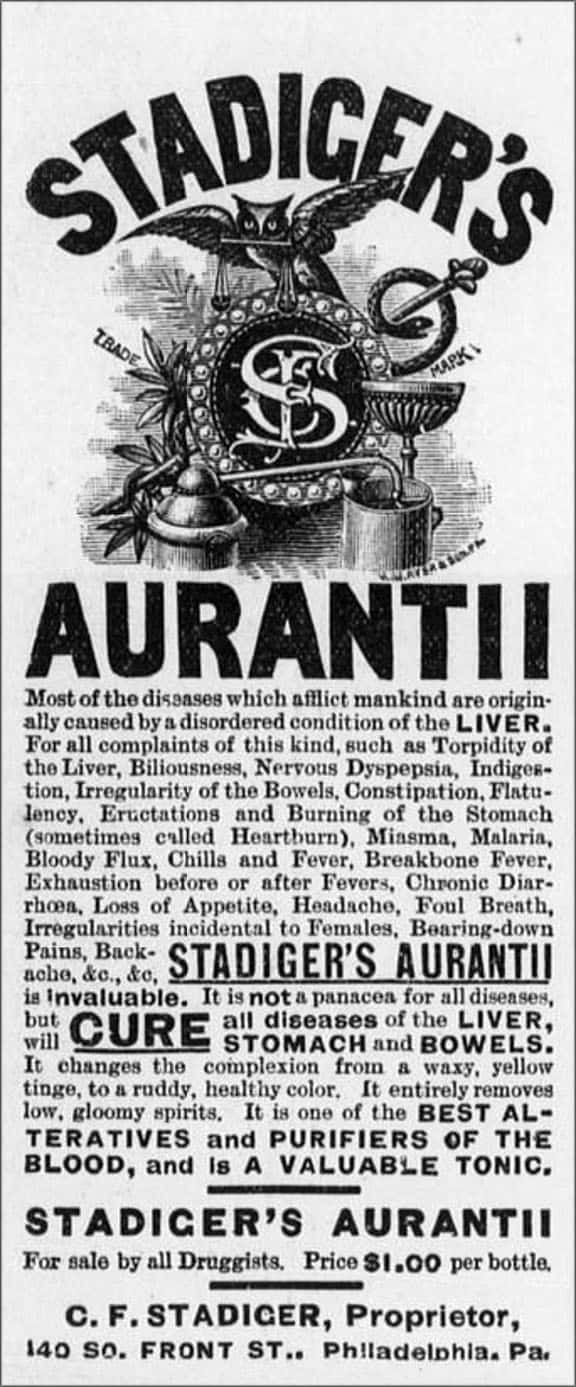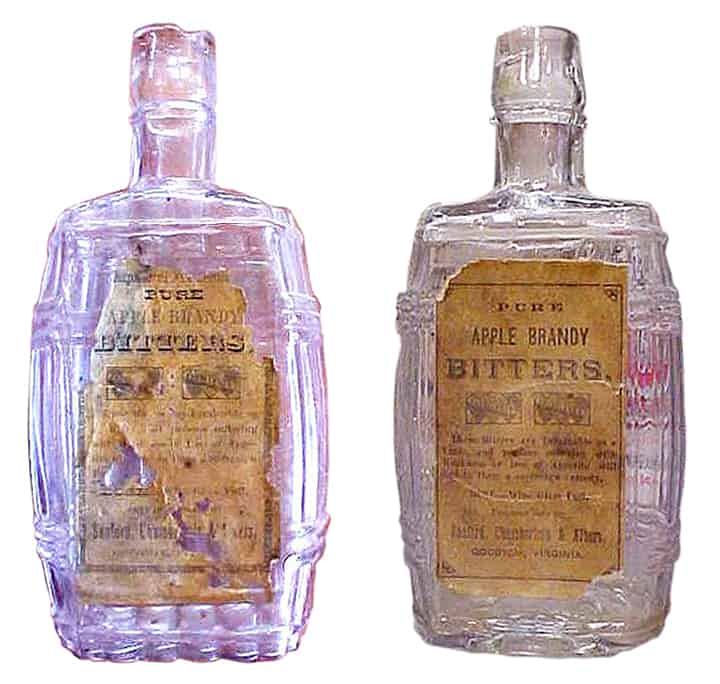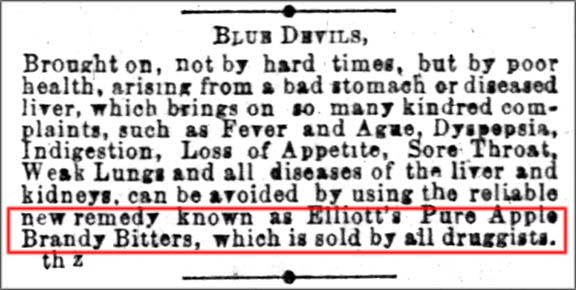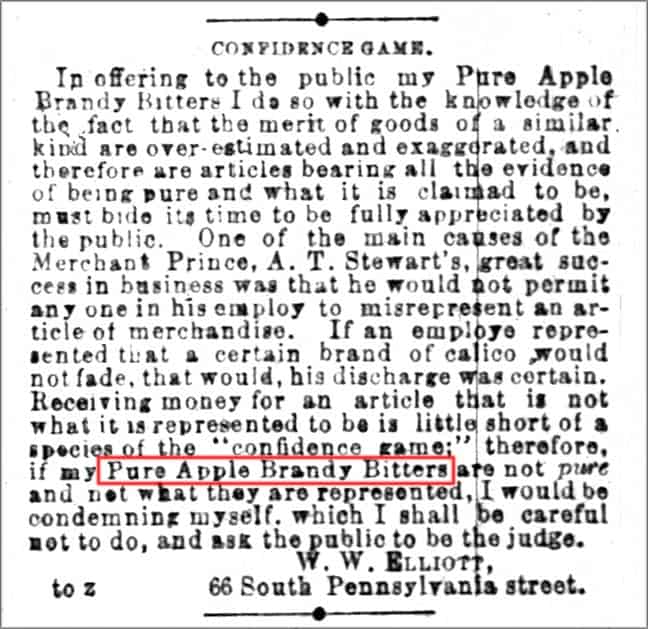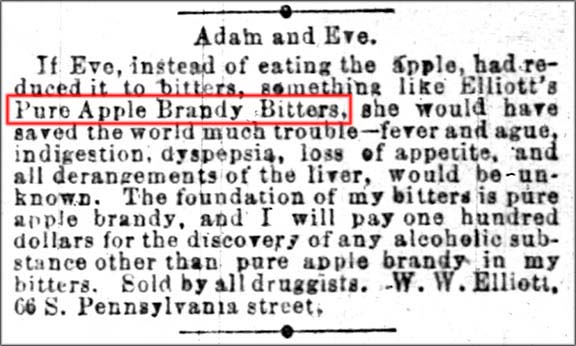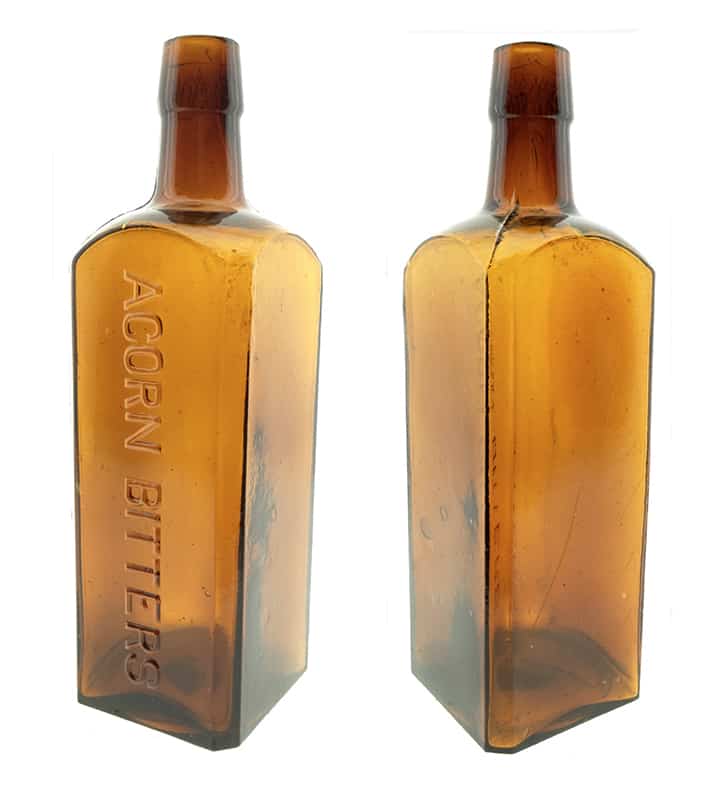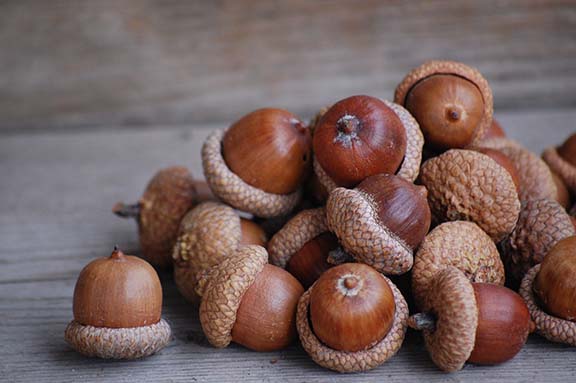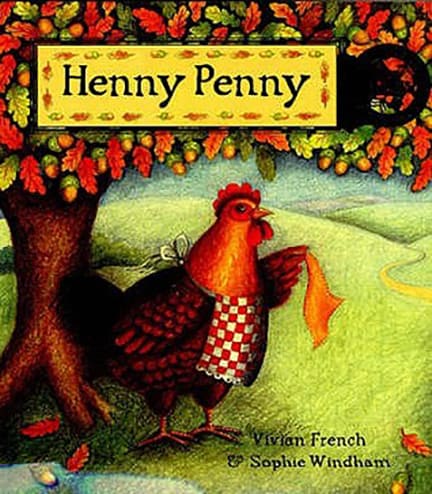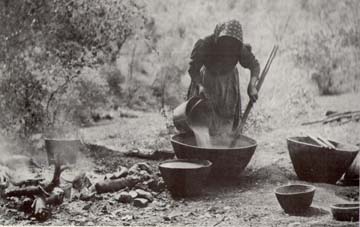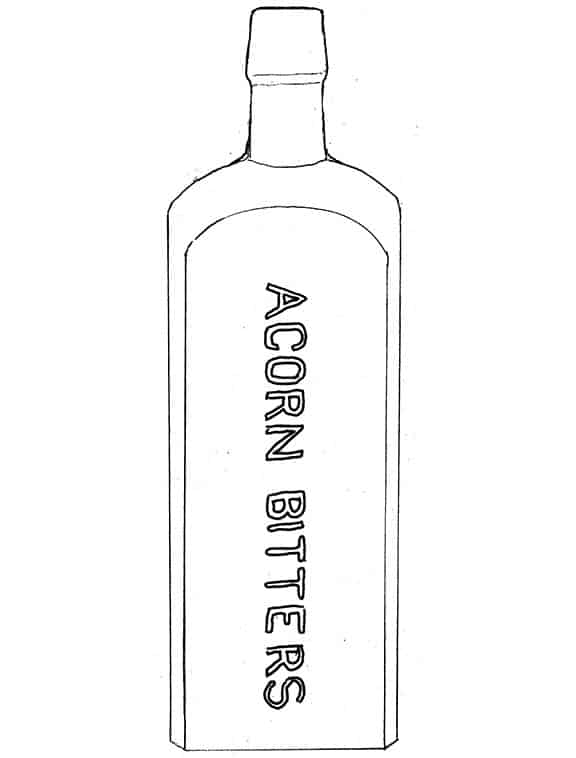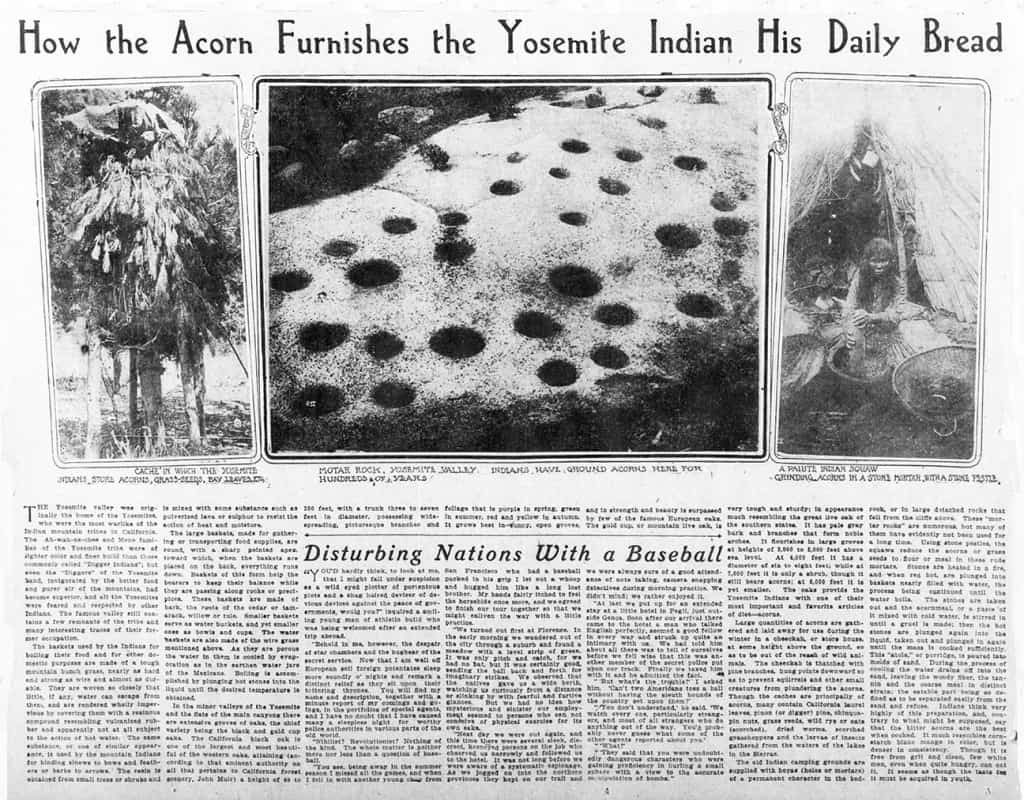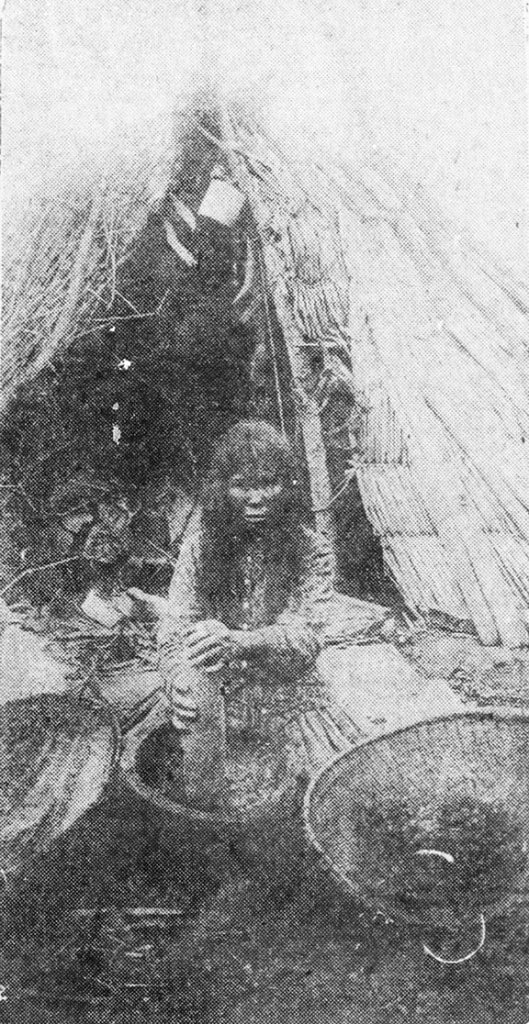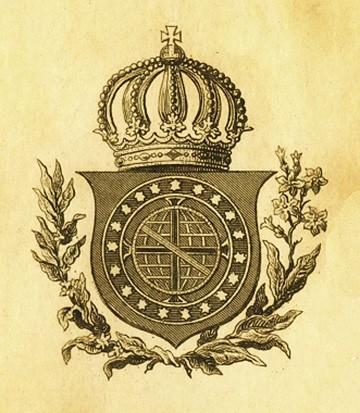
Brazilian coat of arms 19th-century engraving. Published in Systematischer Bilder-Atlas zum Conversations-Lexikon, Ikonographische Encyklopaedie der Wissenschaften und Kuenste (Brockhaus, Leipzig) in 1875.
Brazilian Soda Bitters – Indianapolis
01 January 2015
![]() The Brazilian Soda Bitters is the third post in a week for a bitters from Indianapolis, Indiana. The other brands discussed were the Kaufman’s Celebrated Blue Jacket Bitters and Apple Brandy Bitters. The clipping above prompted this short post.
The Brazilian Soda Bitters is the third post in a week for a bitters from Indianapolis, Indiana. The other brands discussed were the Kaufman’s Celebrated Blue Jacket Bitters and Apple Brandy Bitters. The clipping above prompted this short post.
The Carlyn Ring and W.C. Ham listing in Bitters Bottles is as follows:
B 209 BRAZILIAN SODA BITTERS
Trade Mark April, 1878 to Nathaniel S. Driggs & Winfield S. Lynn, Indianapolis, Indiana
Nathaniel S. Driggs & Winfield S. Lynn
Nathaniel S. Driggs went to Indianapolis as a boy in 1862 from Madison, Indiana and clerked with Winfield S. Lynn at the drug store of Robert Browning. Browning was was Driggs’ Uncle. He continued with the house of Browning & Sloan during almost its entire existence, with the exception of three months service in the 132nd Indiana Regiment, in which he served as a hospital steward. For 1895 to 1897, Driggs owned his own drug store at East Washington and State Street. He died in 1898.
In 1878, Driggs and Scott received a Trade Mark Patent for the Brazilian coat-of-arms and the word “Brazilian” for a new remedy and medical preparation called Brazilian Soda Bitters. The product was short-lived and advertising in Indianapolis occurred for less than a year. There are no examples of this bottle. Was it embossed and labeled or just labeled?
George W. Sloan
George W. Sloan, Phar. D., M. D. One of Indianapolis’ most prominent druggists is Dr. George W. Sloan, who was born at Harrisburg, Pa., June 28, 1835, a son of John and Mary (White) Sloan. His father was a native of New York city, his mother of Philadelphia. His paternal ancestors were of that stanch Pennsylvanian stock which has stamped the impress of its thrift and enterprise upon nearly all sections of our country, and his maternal relatives were Quakers, better known around Philadelphia as members of the Society of Friends. His father, who was a cabinet maker, moved to Indianapolis in the spring of 1837, and became an active and well-known business man of the city where he resided until his death in 1873.
Dr. Sloan was reared in Indianapolis from the time he was two years old, and here obtained his primary education in the public schools. At the early age of thirteen years he found employment in a drug store, and there remained until 1856, when he entered the Philadelphia College of Pharmacy, and there took the course of that institution. The panic of 1857 made it impossible for him to continue his studies, and he returned to Indianapolis and resumed work as a drug clerk. In 1862 he became a member of the drug firm of Browning & Sloan, and so continued until 1887, since when he has conducted a drug business of which he has been the sole proprietor. Meantime (May 16, 1864) he enlisted in Company B, Thirty-second Regiment Indiana Infantry, and was made first lieutenant. His regiment saw four mouths’ service doing guard duty between Louisville, Ky., and Chattanooga, Tenn., keeping railway communication open during Sherman’s famous ”March to the Sea.”
As a druggist, Dr. Sloan ranks with the best pharmacists in the city or State, carrying a stock averaging from $12,000 to $15,000 in value, and doing an extensive and profitable trade. He is one of the oldest active members of the American Pharmaceutical Society, his connection with that body dating from 1857, and was its president in 1879-80. He was one of the charter members and organizers of the Indiana State Pharmaceutical Society and has served on several of its most important committees. The degree of doctor of pharmacy was conferred upon Dr. Sloan by Purdue University, and the degree of doctor of medicine by the Medical College of Indiana, and he is an honorary member of the Marion County Medical Society, and of the Indiana State Medical Society. In Masonry Dr. Sloan has been specially prominent, having been treasurer of his lodge of Free and Accepted Masons for more than twenty years. He is a thirty-third degree Scottish Rite Mason, and also a Knight Templar of the York Rite, and is a member of the Chosen Friends. Dr. Sloan has been a member of the board of trade since its organization, and has, during all the time that has since elapsed, been a member of the board of governors, and is at present vice president. He is also prominently identified with the Commercial Club, and is a member of George H. Thomas post, G. A. R., and Indiana Commandery, L. L.
In 1866 Dr. Sloan married Miss Caroline, daughter of Hiram and Mary A. (Blair) Bacon, her parents being natives of Massachusetts, and among the early settlers of Marion County, Ind. Three children have been born to their union, named: George B., Mary A. and Frank T. The first named, who is a graduate of pharmacy from Purdue College, his father’s alma mater in the same science, has been for some years connected with his father’s business. Dr. and Mrs. Sloan are members of the Protestant Episcopal Church and the former has been a member of its vestry for more than a score of years. The Doctor is a Republican in his political affiliations, but has always been too busy with, and too entirely devoted to his business, to take any prominent or more than ordinary active part in politics. [Pictorial and biographical memoirs of Indianapolis and Marion County]
Browning & Sloan
As an important factor in the growth and commercial development of our thriving inland metropolis, the drug trade has assumed no insignificant part, as might be illustrated by a detailed history of the rise and progress of the house now conducted by the firm of Browning & Sloan and popularly known to the trade as “Apothecaries’ Hall.” This house was established in the infancy of our commerce and even before Indianapolis had attained the dignity conferred by a city charier. The limits allotted in the present volume will, however, permit but a cursory glance at the early history of this representative house, which was founded nearly half a century ago and is consequently now one of the oldest established business houses in the state. At its inception limited quarters at No. 22 West Washington St. were found adequate for the transaction of the business at that time, which did not exceed $1o,oco per annum, while at the present day the annual transactions range from $250,000 to $300,000, with a trade extending not only to all sections of Indiana but to all the adjacent states.
The premises now occupied, at Nos. 7 and 9 East Washington St., for general sales purposes, comprise the spacious and commodious four story business structure known as Apothecaries’ Hall, 30 x 120 feet in dimensions, a view of which appears in connection with this sketch, while two floors of an additional building in the rear each 30 x 75 feet in dimensions are occupied for laboratory and storage purposes. The firm also occupies for the storage of original packages and duplicate stock the commodious warehouses at Nos. 10, 12 and 13 East Pearl St. and at Nos. 223 and 225 South Pennsylvania St.
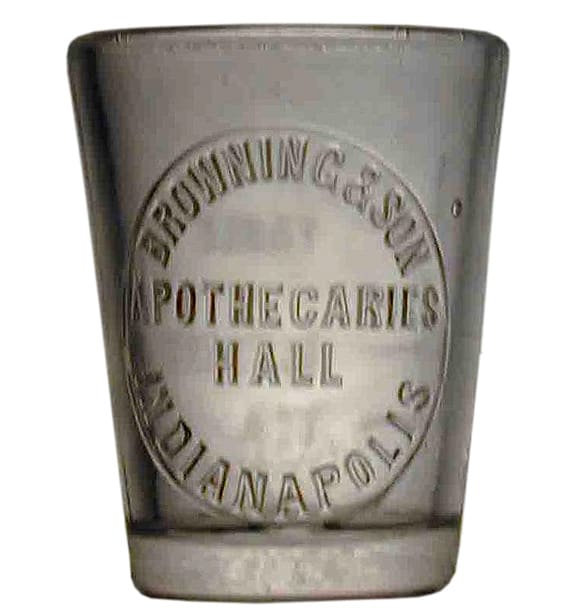
Browning & Son Apothecaries Hall Indianapolis {small} W.T. & Co. AD U.S.A. C1081S1-43 – Bergsengs.com
Their stock, which is complete and comprehensive in every department of Apothecaries’ supplies, embraces a general line of drugs, chemicals, dye stuffs, paints, oils, varnishes, brushes and painters’ supplies, glass and putty, pure and imported wines and liquors for medicinal and mechanical purposes, the leading proprietary medicines and pharmaceutical preparations of the day, surgical instruments, perfumeries, toilet articles and druggists’ sundries generally.
This is the leading and most extensive as well as oldest commercial establishment of its class in the city or state and in the completeness of its stock, magnitude of its transactions snd facilities for supplying dealers of the West will not suffer by comparison with any contemporaneous establishment in any of the prominent trade centers of the country. The average valuation of stock carried in the different departments will not fall short of $100,000 and 20 experienced and competent assistants are regularly employed, while every care and precaution is taken in the accurate filling of all orders.
The individual members of the present firm, which was organized in 1863, are Robert Browning and Geo. W. Sloan. The former is a native of Jefferson County, Ind., and came to this city in 1843, entering the store of which he is now one of the proprietors, as a boy, remaining in the employ of his predecessors in various capacities untif assuming the present position as the head of this important house.
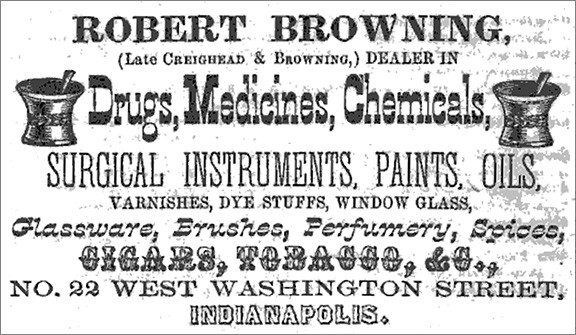
Robert Browning (Late Craighead & Browning) advertisement – A.C. Howard’s Directory for the City of Indianapolis, 1857
Mr. Browning has taken an active interest in the growth, development and progress of the business and educational interests of the city and has been for the past six years a member of the Board of School Commissioners. Mr. George W. Sloan, the junior member of the firm, is a native of Pennsylvania and was born in Harrisburg, in that state, coming to this city when quite young and commenced his business career as a boy in this house, remaining in its employ until the formation of the present partnership, as above noted. Both members of the firm having been identif1ed with this business since boyhood are thoroughly conversant w1th all the details and requirements and possess an extended acquaintance with the trade in this and adjacent states, through which the trade of the house extends. [Manufacturing and Mercantile Resources of Indianapolis, Indiana]
Sloan Drug Company
Sloan Drug Company, organized January 1, 1896, is the outgrowth of the firm of George W. Sloan, originally established in 1887. Mr. Sloan has had a longer continued identification with the drug business in Indianapolis than any other person now living in the city. In 185o he entered the service of his uncle, David Craighead, who was then operating a drug store in the same room that is now occupied by the present company, also with Craighead & Browning, and after the death of Mr. Craighead, with Mr. Browning, who became the successor. In 1862 he took an interest in the business and the firm became known as Browning & Sloan, and were recognized as the leading pharmacists of Indianapolis.
The business having outgrown the capacity of the room then occupied, they moved to 7 and 9 East Washington street, where the business was conducted under this firm name until 1887, when Mr. Sloan retired and embarked for himself in the present location-the place occupied by the old house in 185o.
Through the long term of years that Mr. Sloan has been identified with the business interests of the city – longer than that of any business man now engaged in Washington street, he has at all times been held in the highest esteem by his fellow citizens. He has been honored with the degree of “Doctor in Medicine” by the Medical College of Indiana, and with the degree of “Doctor of Pharmacy,” Purdue University. He is ex-president of the American Pharmaceutical Association and is also a charter member of the Board of Trade, being a member of its governing committee; he is also a member of the Commercial Club, and a member of the Board of School Commissioners, being its treasurer.
The Sloan Drug Company are extensive manufacturers of various Pharmaceuticals, also Sloan’s Carbolated Dentifrice, that has a large sale throughout the country, and many other preparations that bear their well known brand. Associated in the business with Mr. Sloan is his son Geo. B. Sloan, a graduate of Purdue University Pharmacy School, who has been reared in business under his father. [Hyman’s Handbook of Indianapolis, Max Robinson Hyman, 1897]
Select Listings:
1857: Robert Browning (late Craighead & Browning) advertisement (see above) – A.C. Howard’s Directory for the City of Indianapolis, 1857
1862: Nathaniel S. Driggs went to Indianapolis as a boy in 1862 from Madison, Indiana and clerked with Winfield S. Scott at the drug store of Robert Browning.
1871: Nathaniel S. Driggs, clerk, Browning & Sloan, bds 169 N. Illinois – Indianapolis City Directory
1871-1877: Browing & Sloan, Druggists, Robert Browning, George W. Sloan, 7 & 9 E. Washington – R. L. Polk & Co.’s Indianapolis City Directory
1877: Nathaniel S. Driggs, clerk, Browning & Sloan, bds Remy Hotel (also Robert Driggs, clerk) – R. L. Polk & Co.’s Indianapolis City Directory
1877: Winfield S. Lynn, clerk, Browning & Sloan, res 175 N Alabama – R. L. Polk & Co.’s Indianapolis City Directory
1878-1879: Brazilian Soda Bitters advertisements (see top of post) – The Indianapolis News, Wednesday, May 1878 – March 1879
1878: Nathaniel S. Driggs and Winfield S. Lynn get a Trade Mark Patent for The Brazilian coat-of-arms and the work “Brazilian” for a New Remedy and Medical Preparation in May 1878 (see above).
1887: Nathaniel S. Driggs, member American Pharmaceutical Association
1895-1897: Nathaniel S. Driggs, Retail Druggist, 850 E. Washington – Polks Indianapolis City Directory
1898: Death Nathaniel S. Driggs


